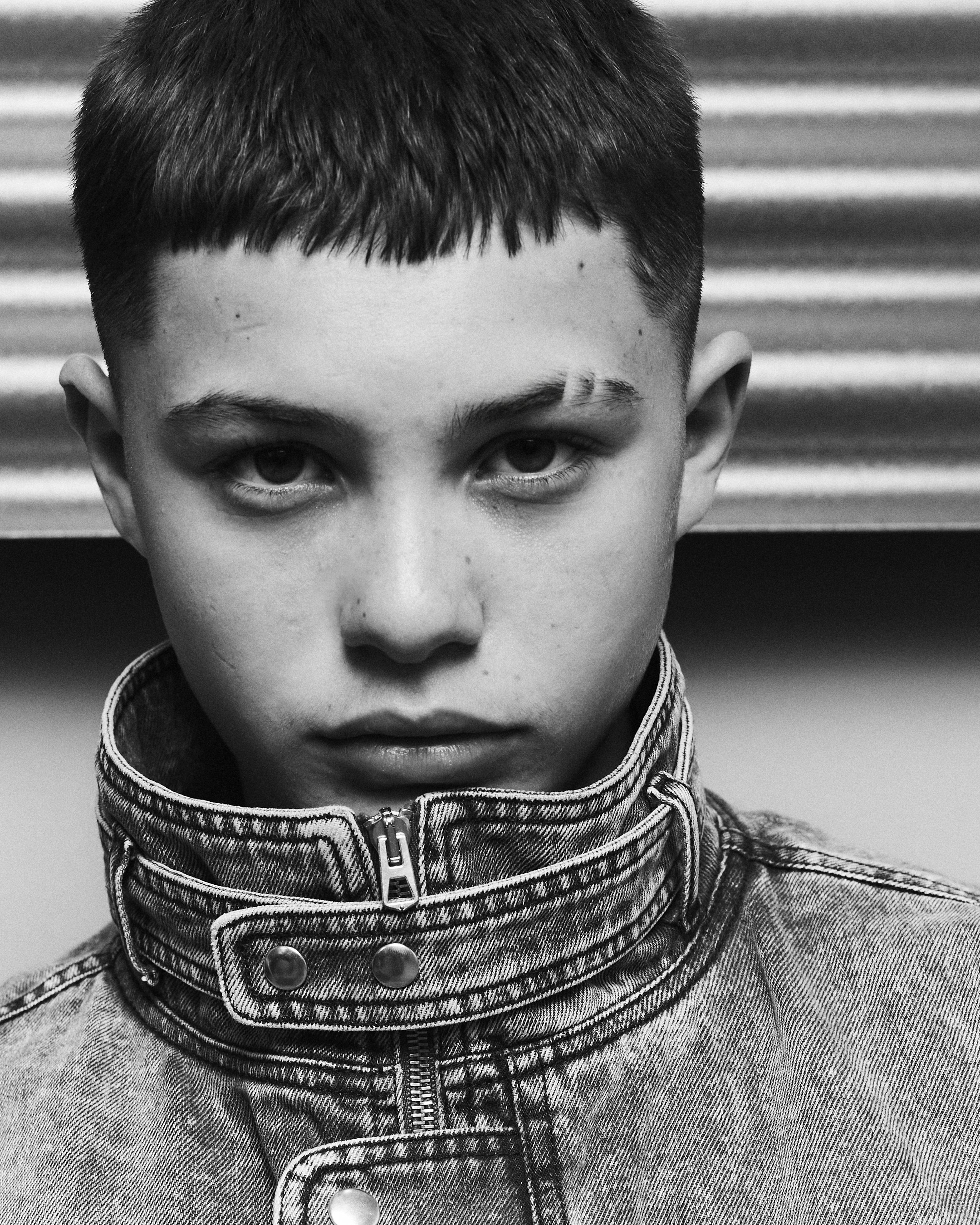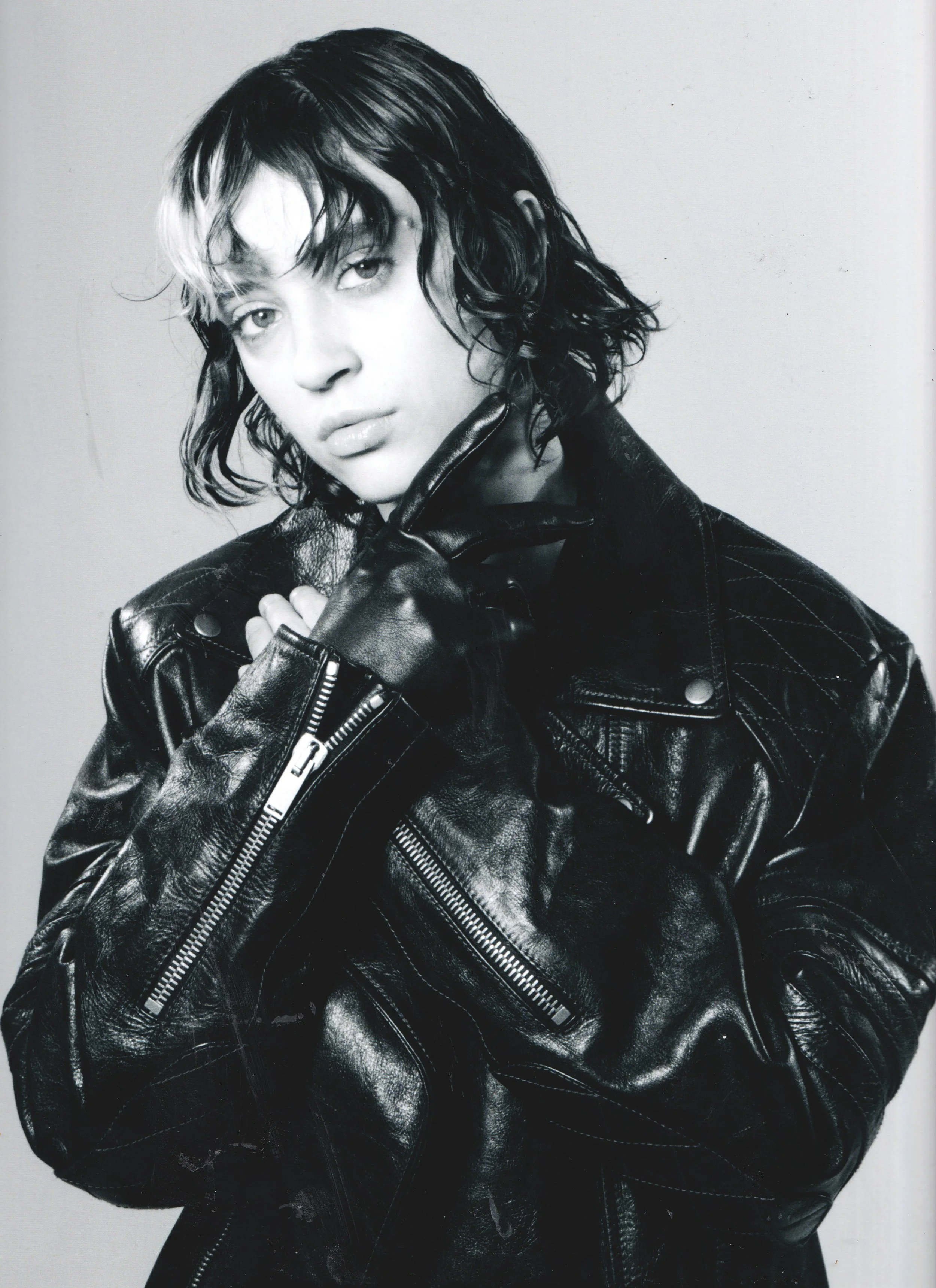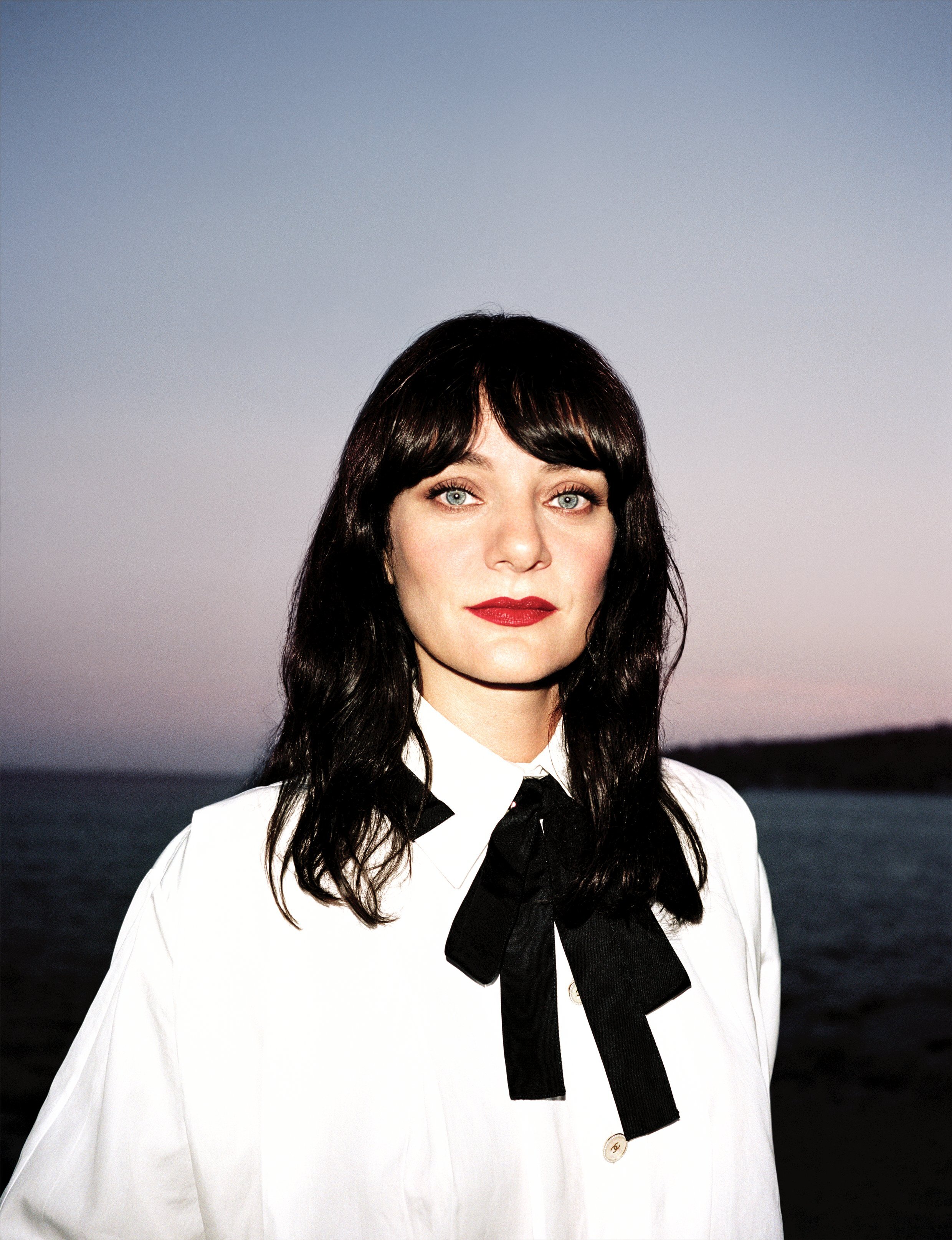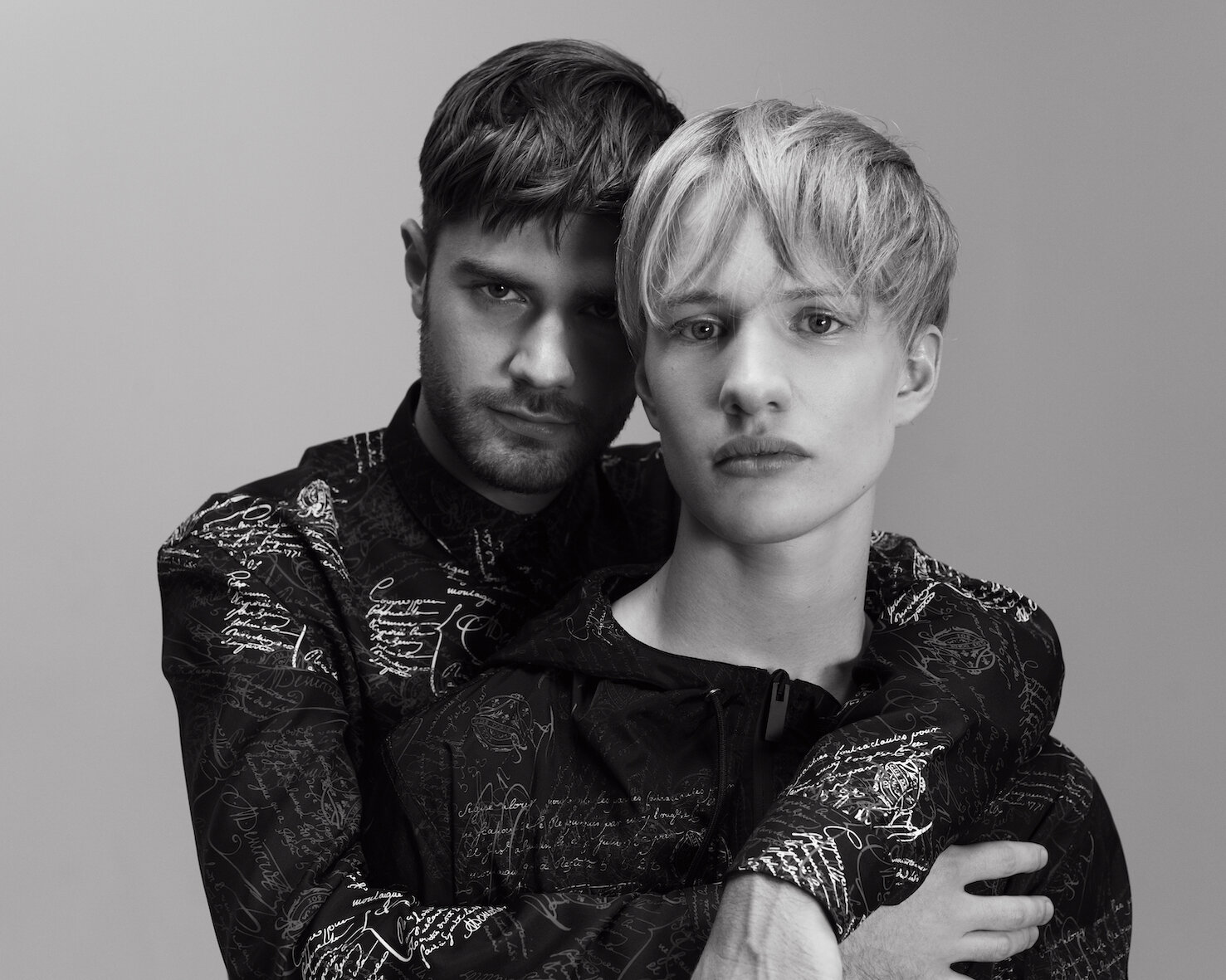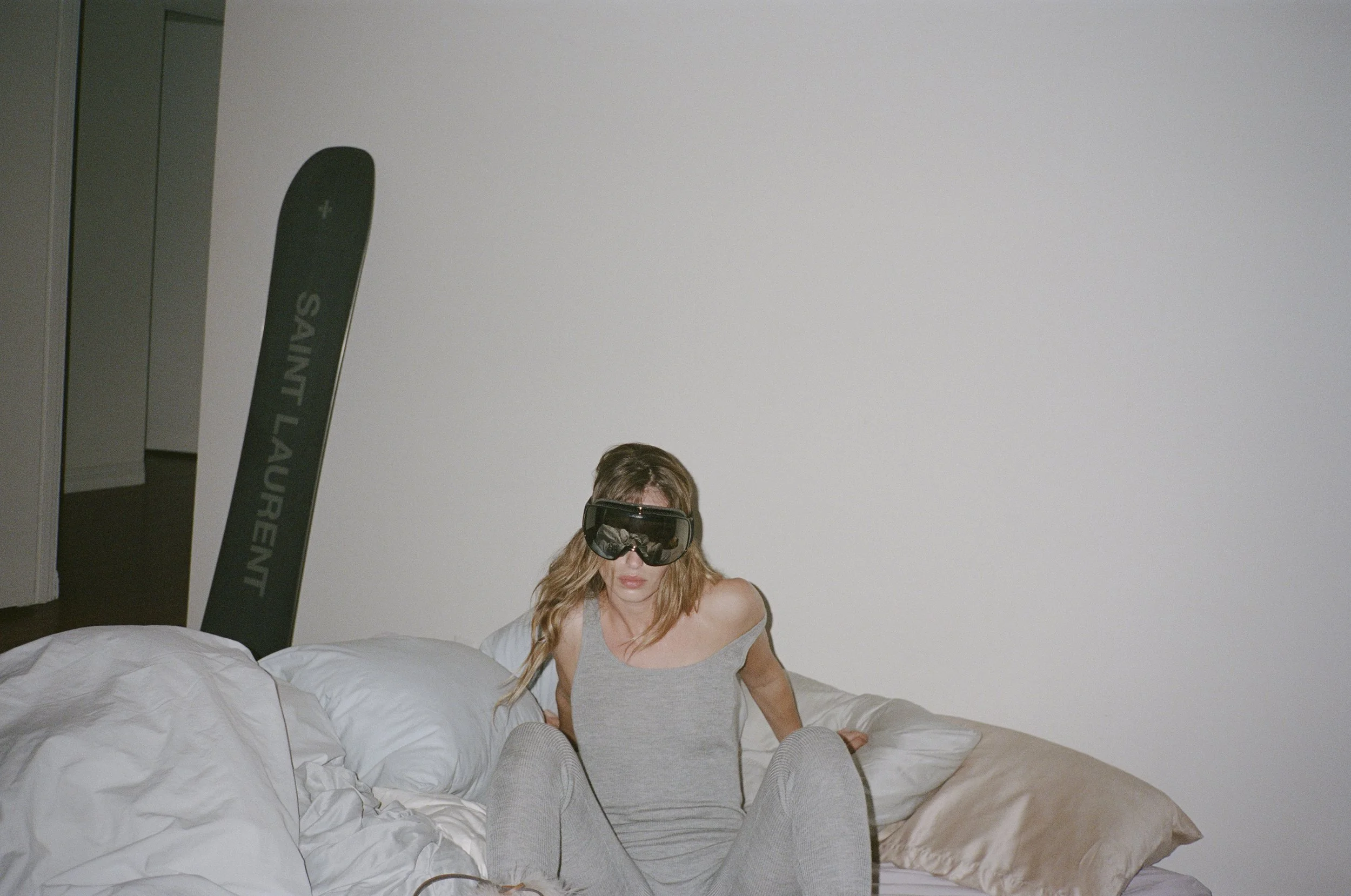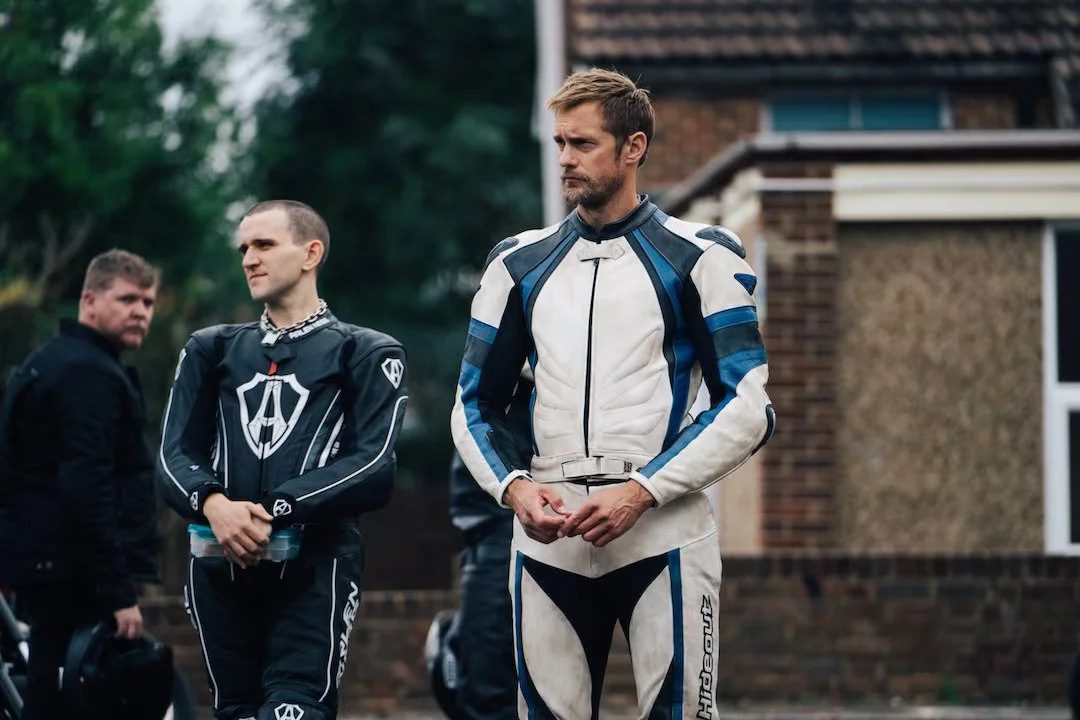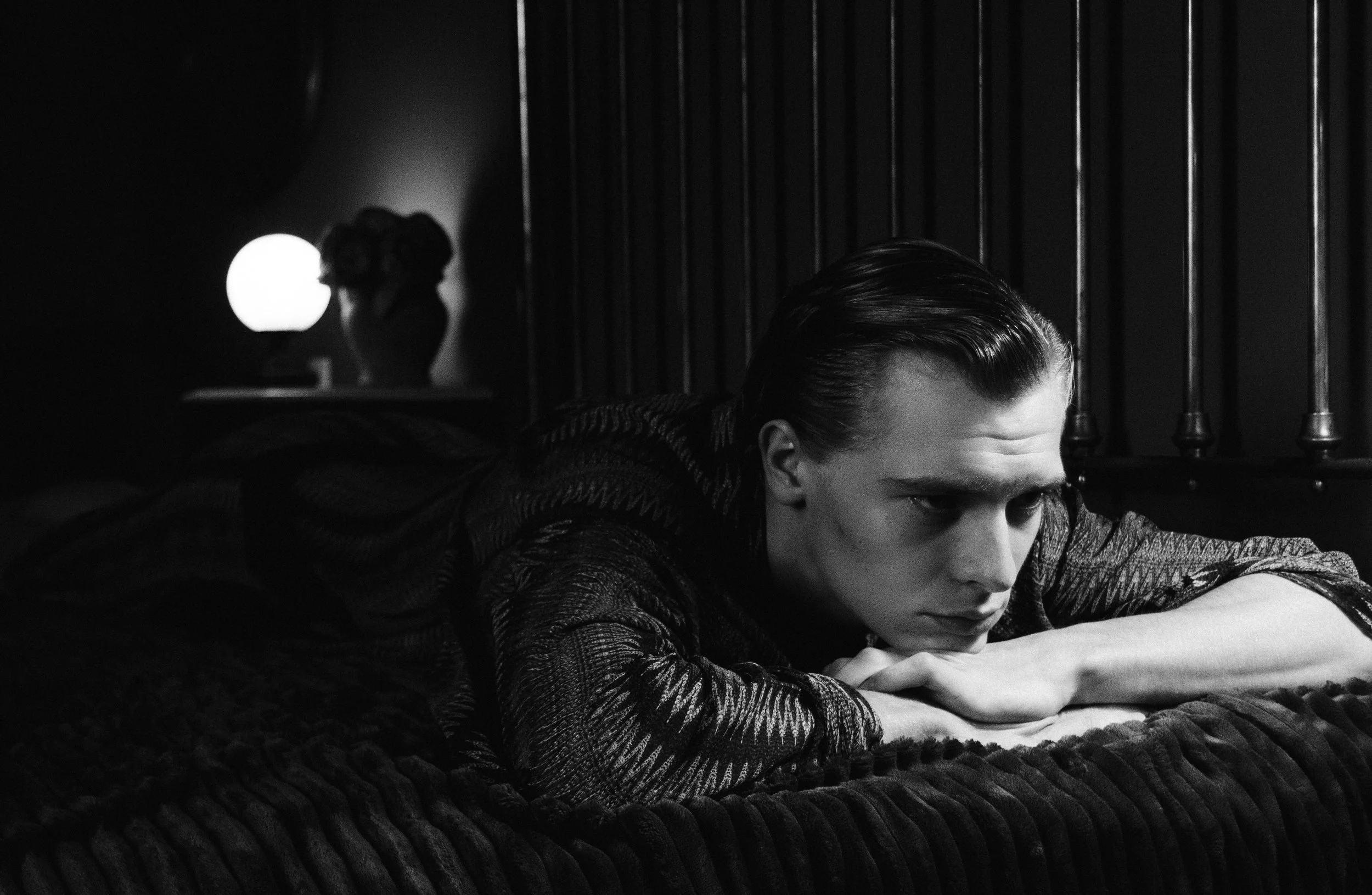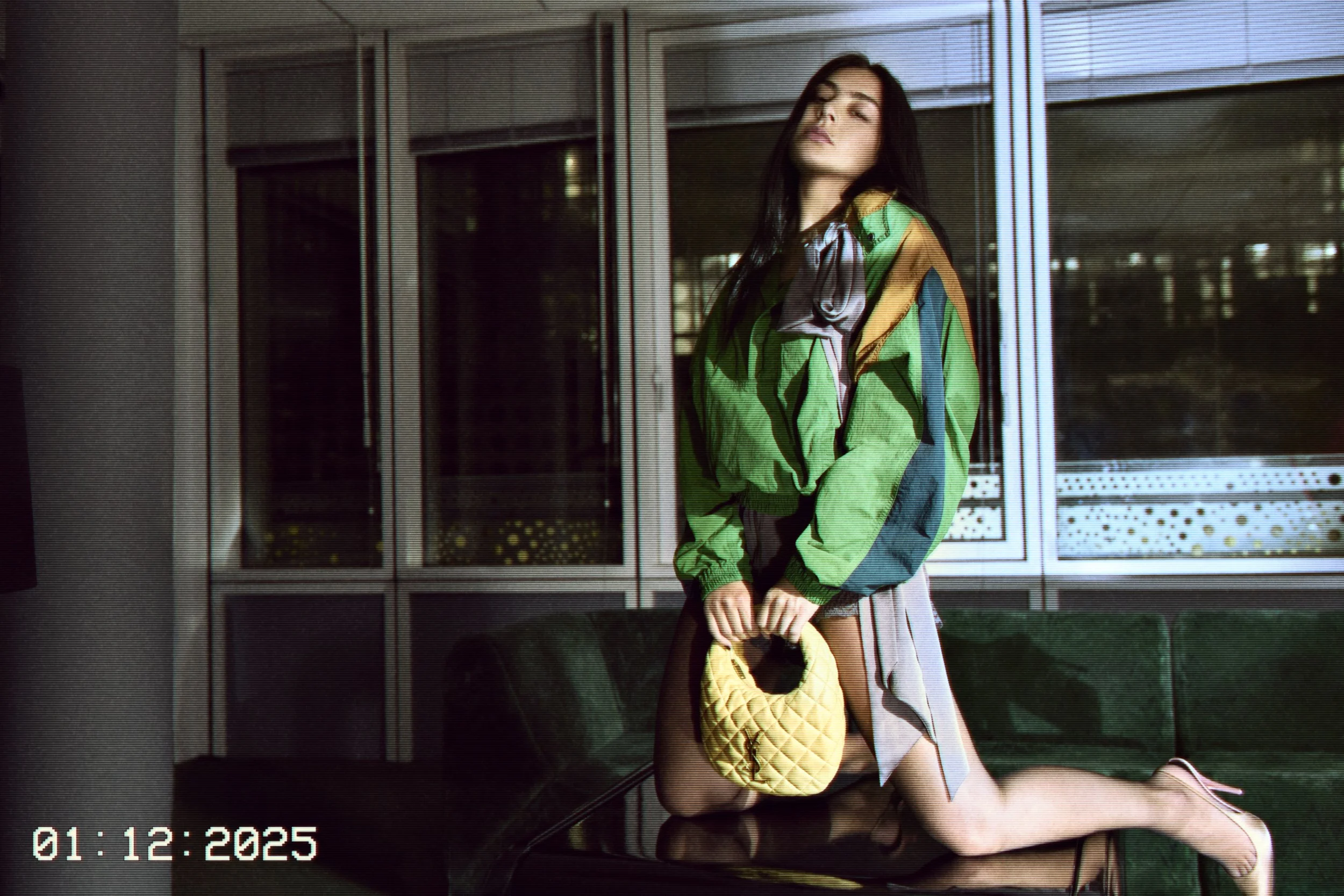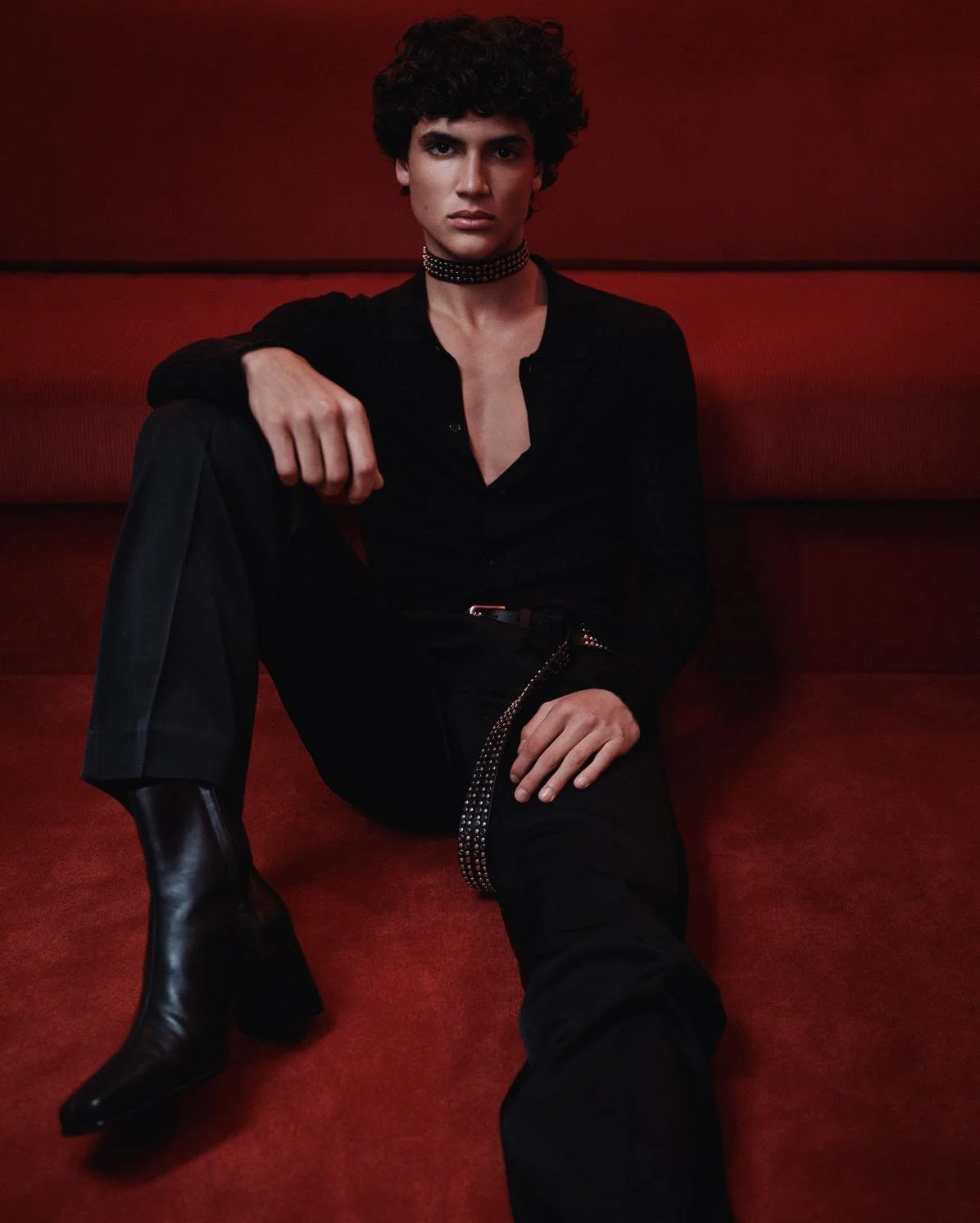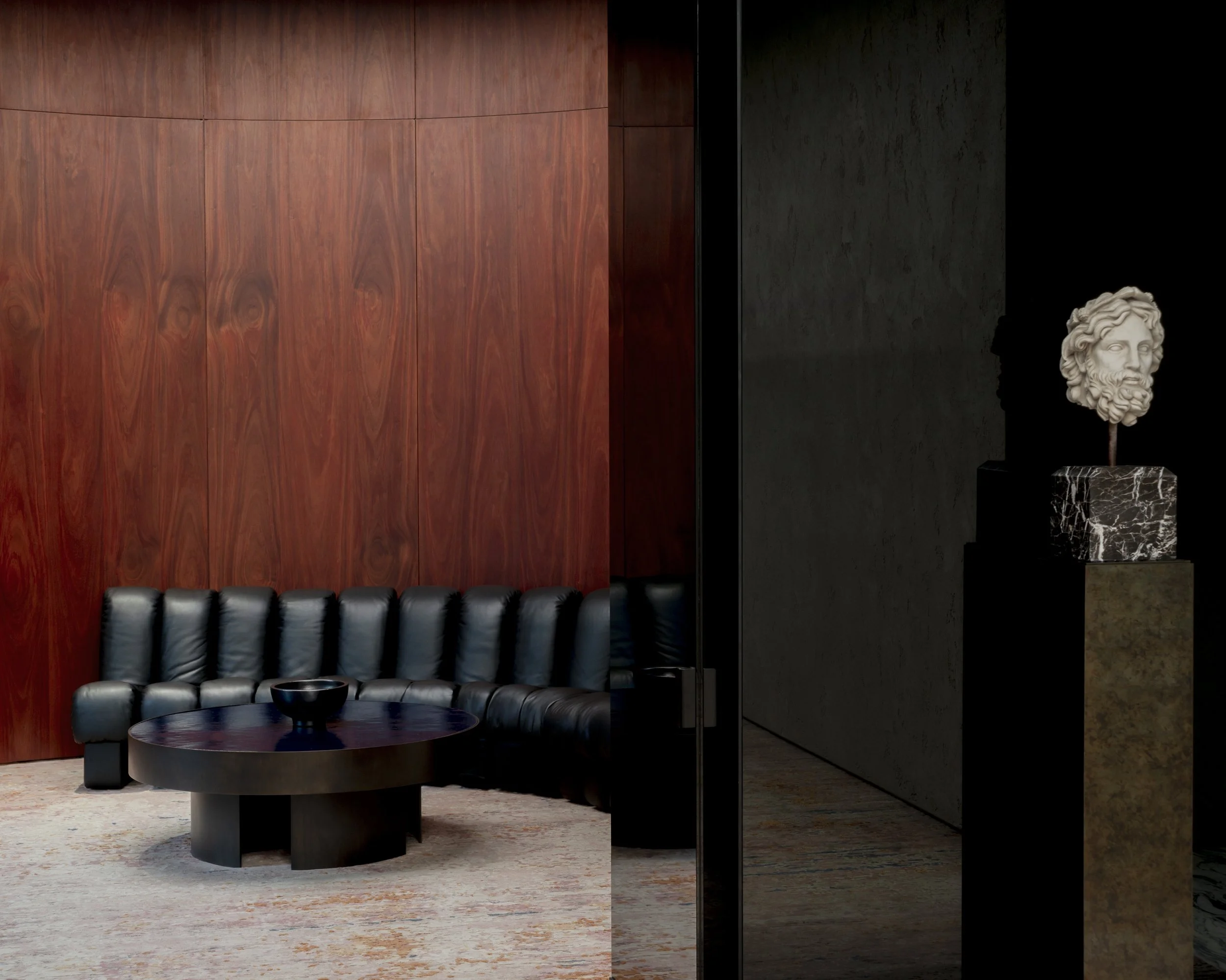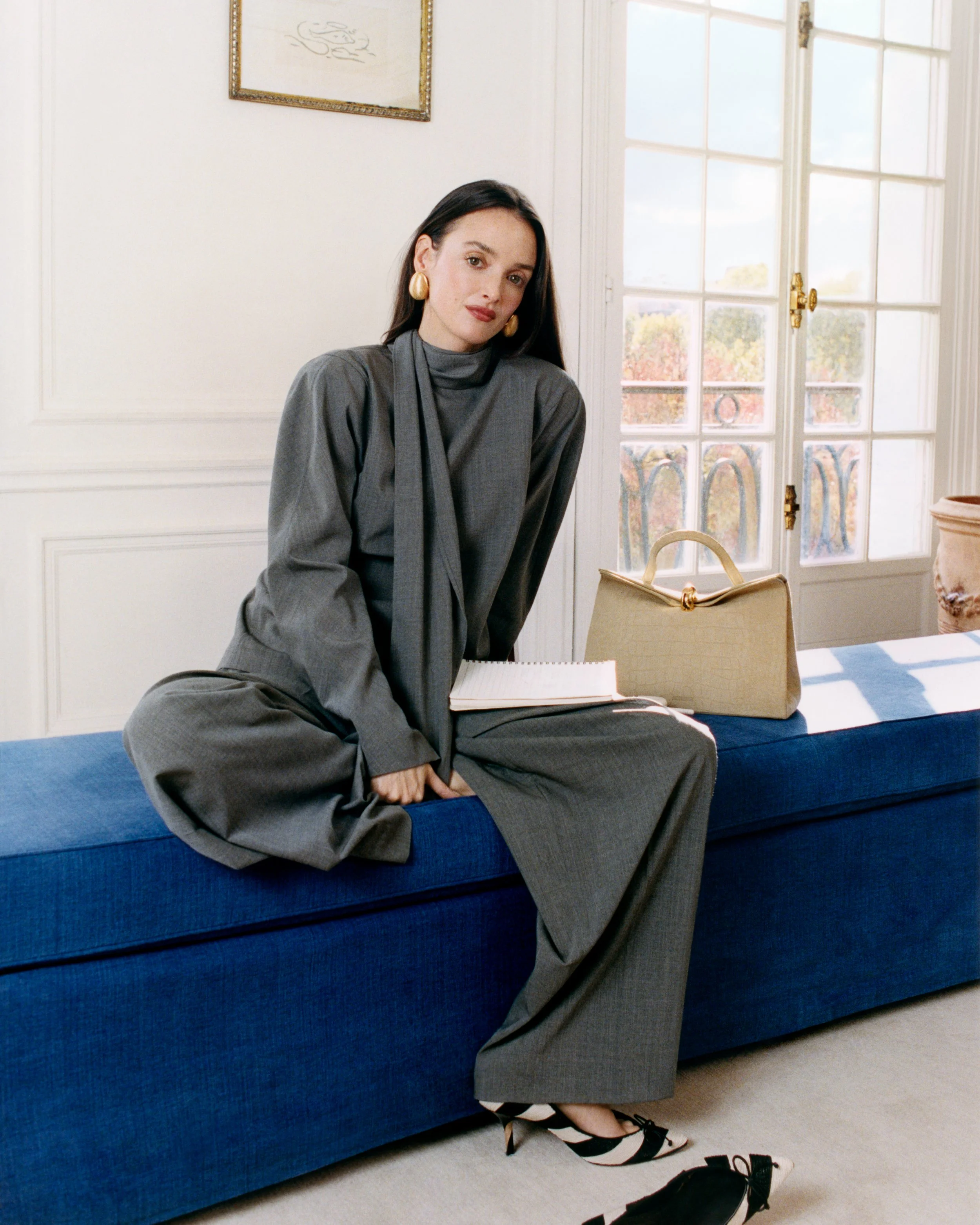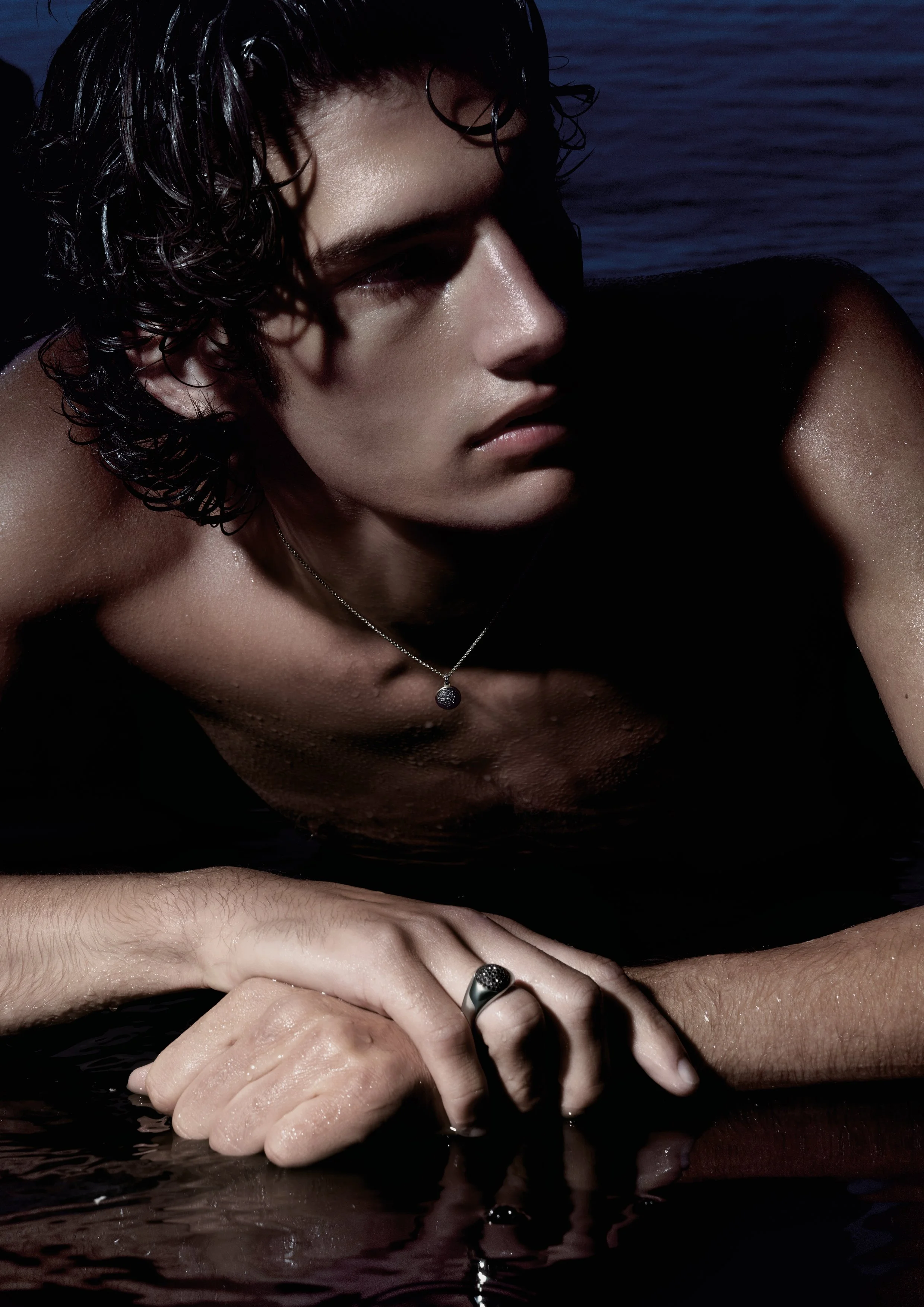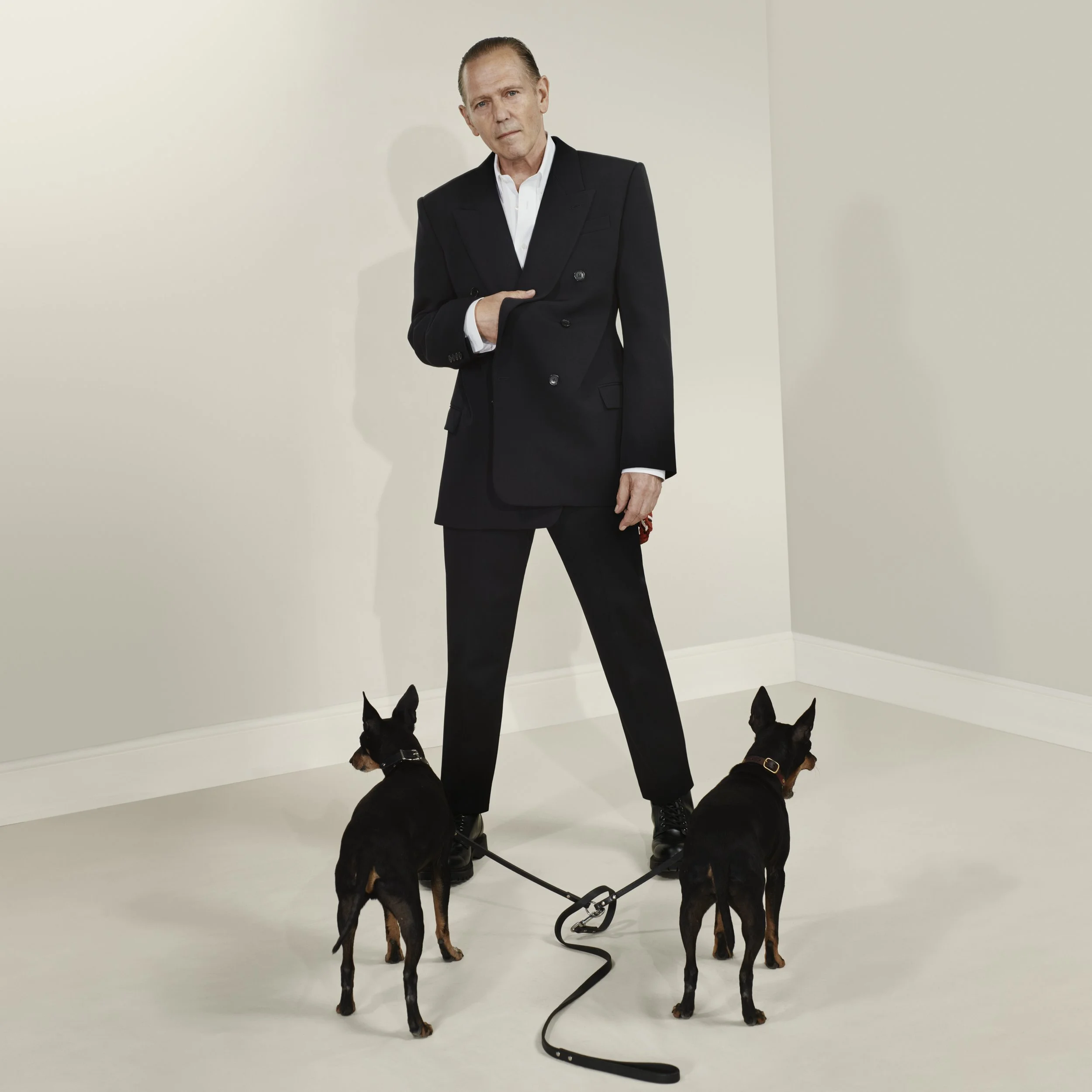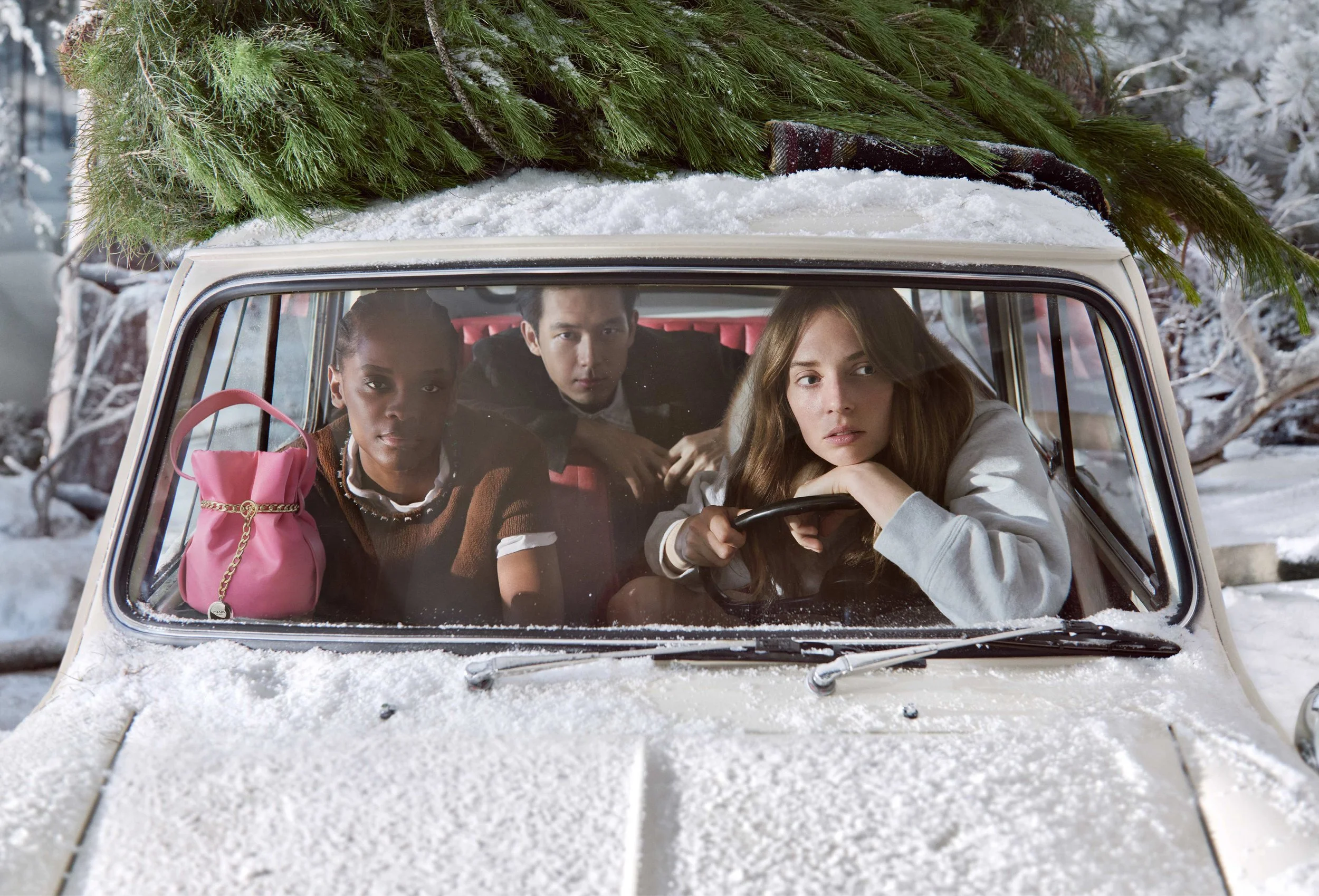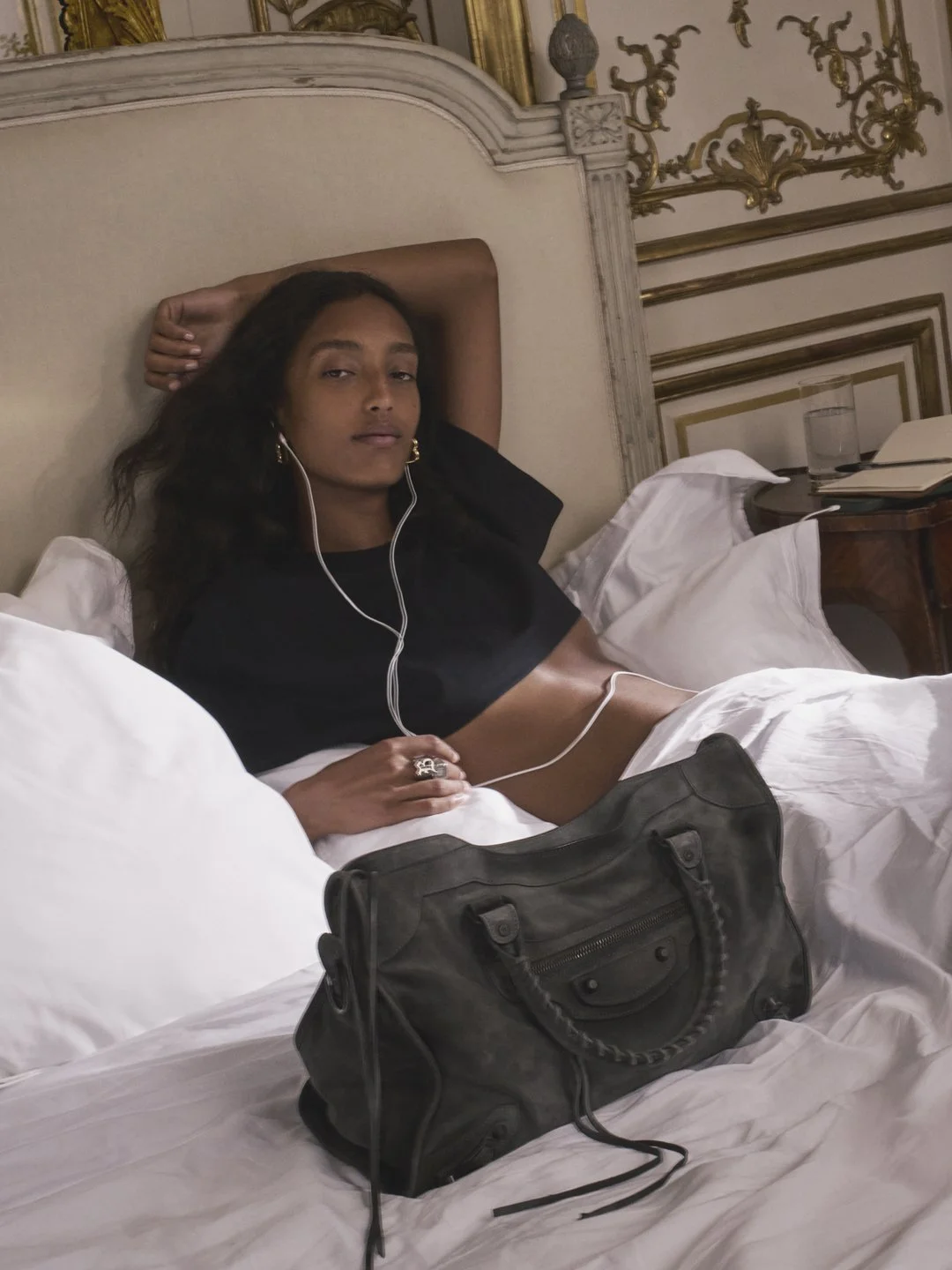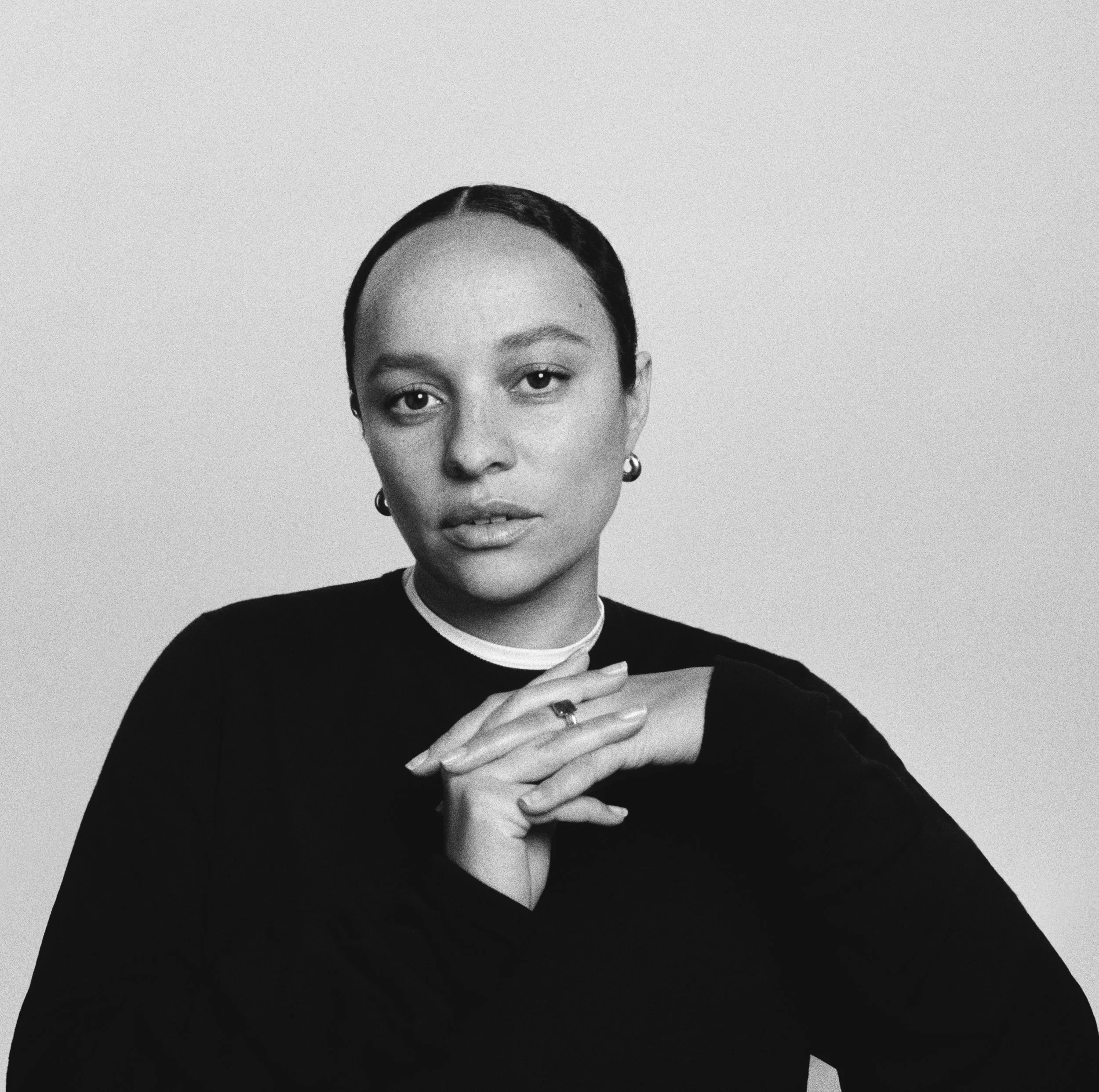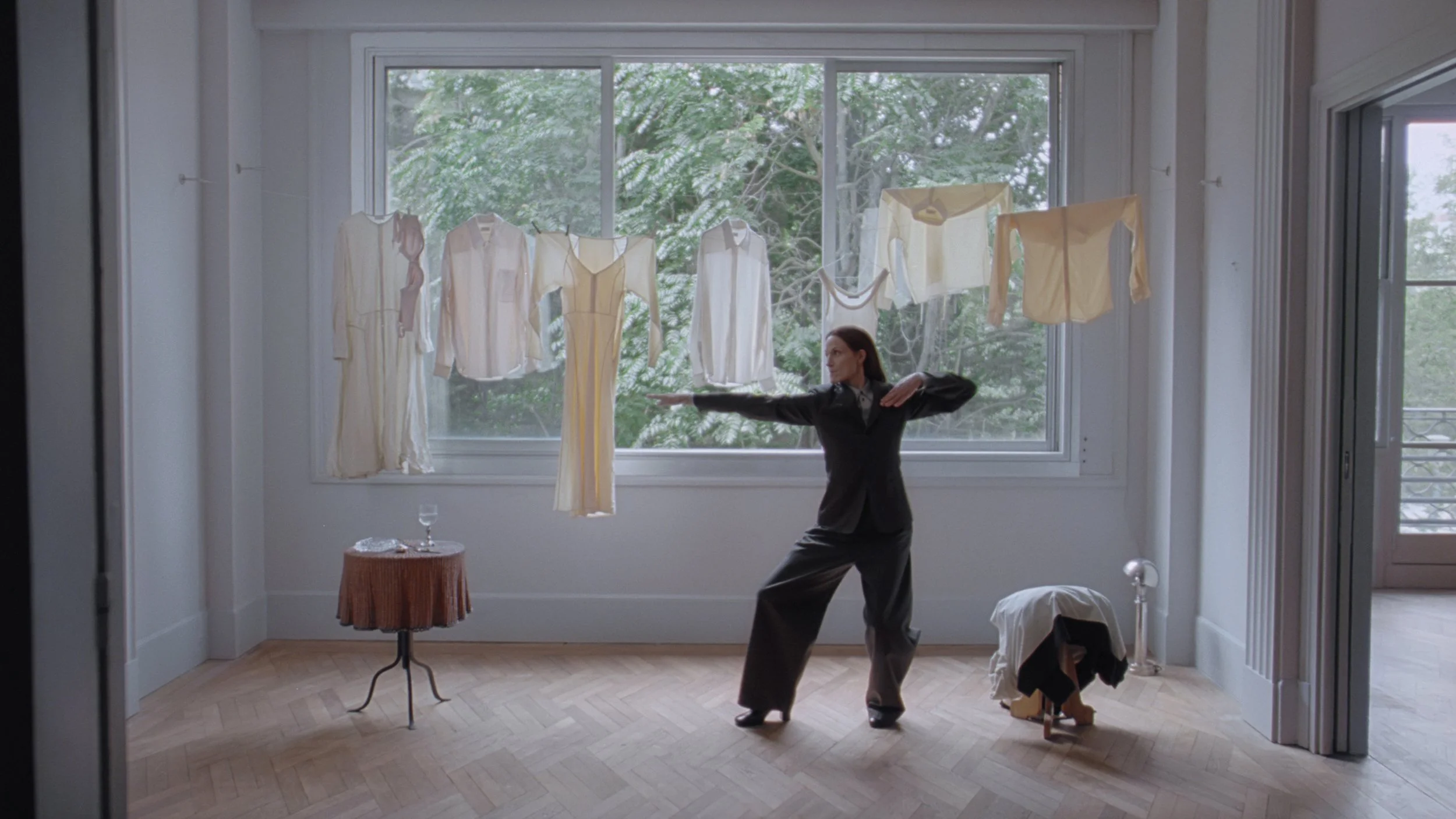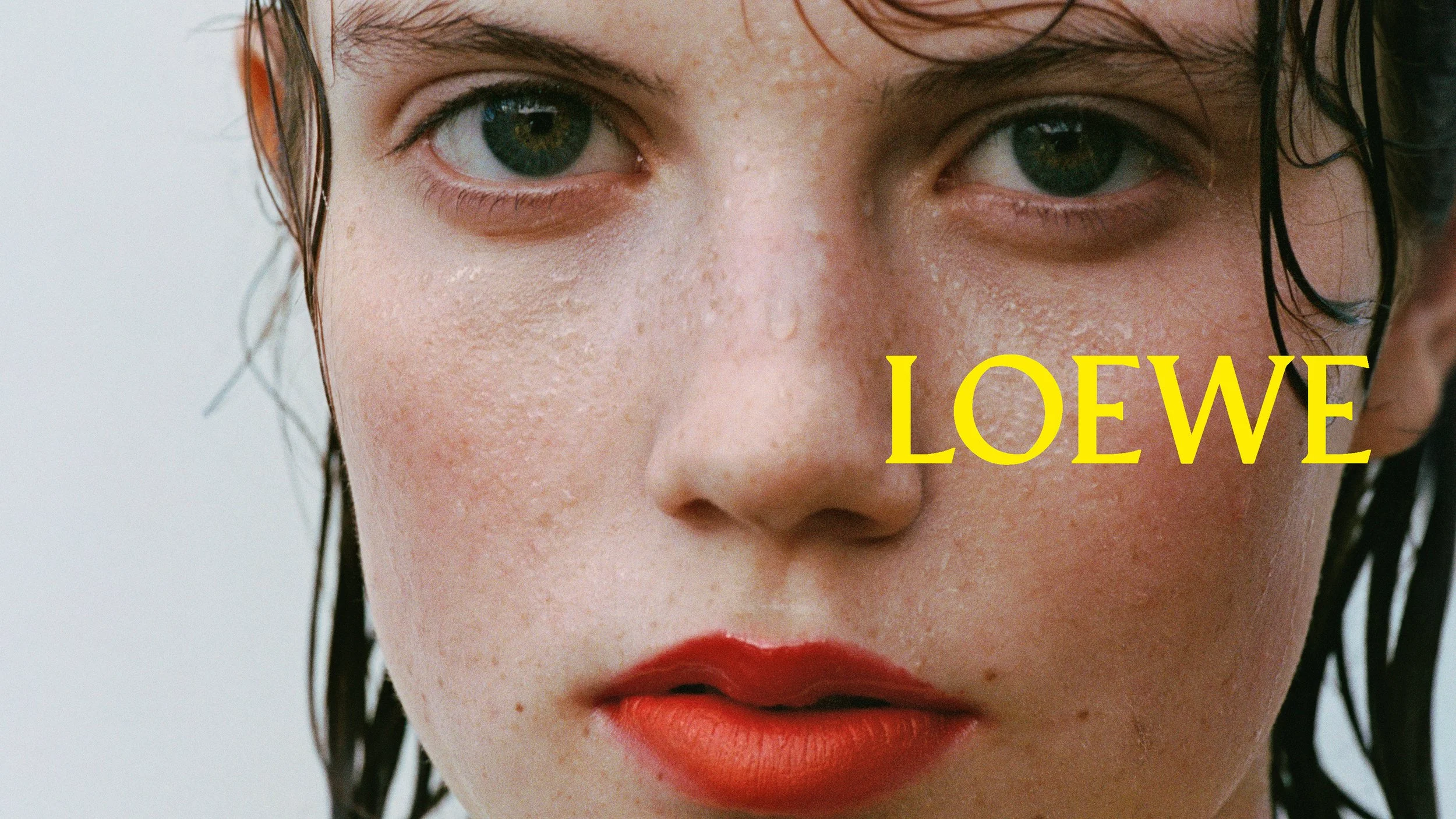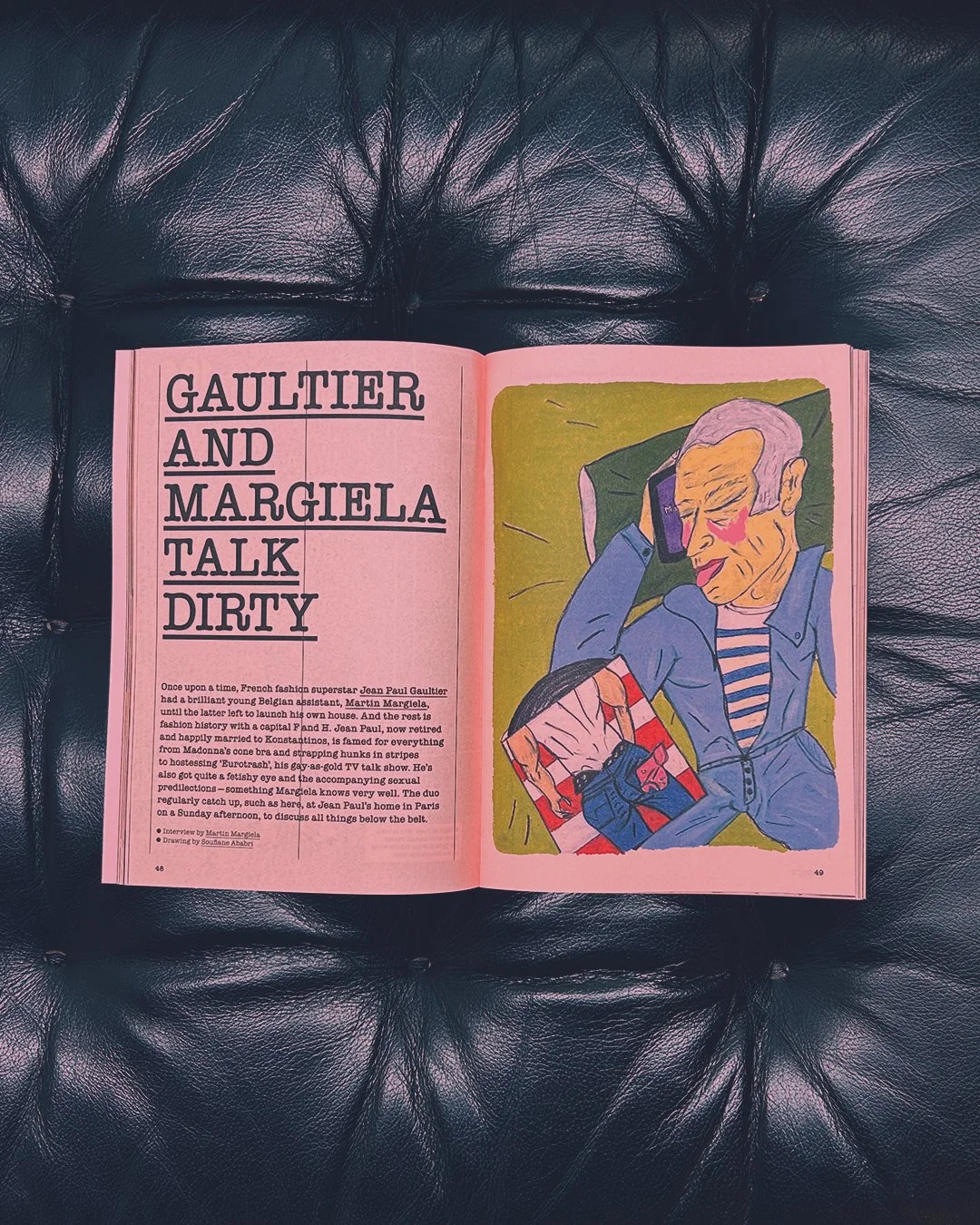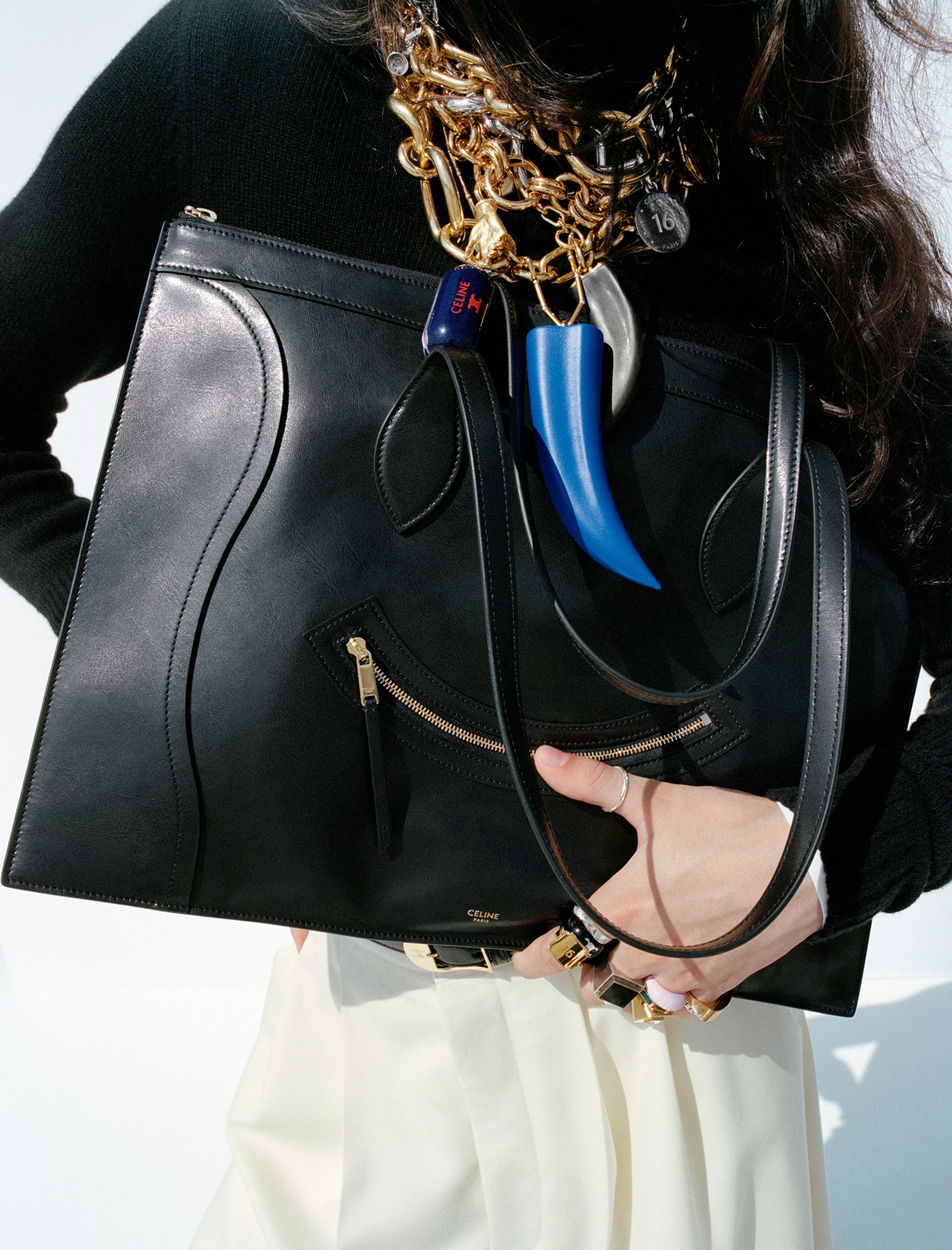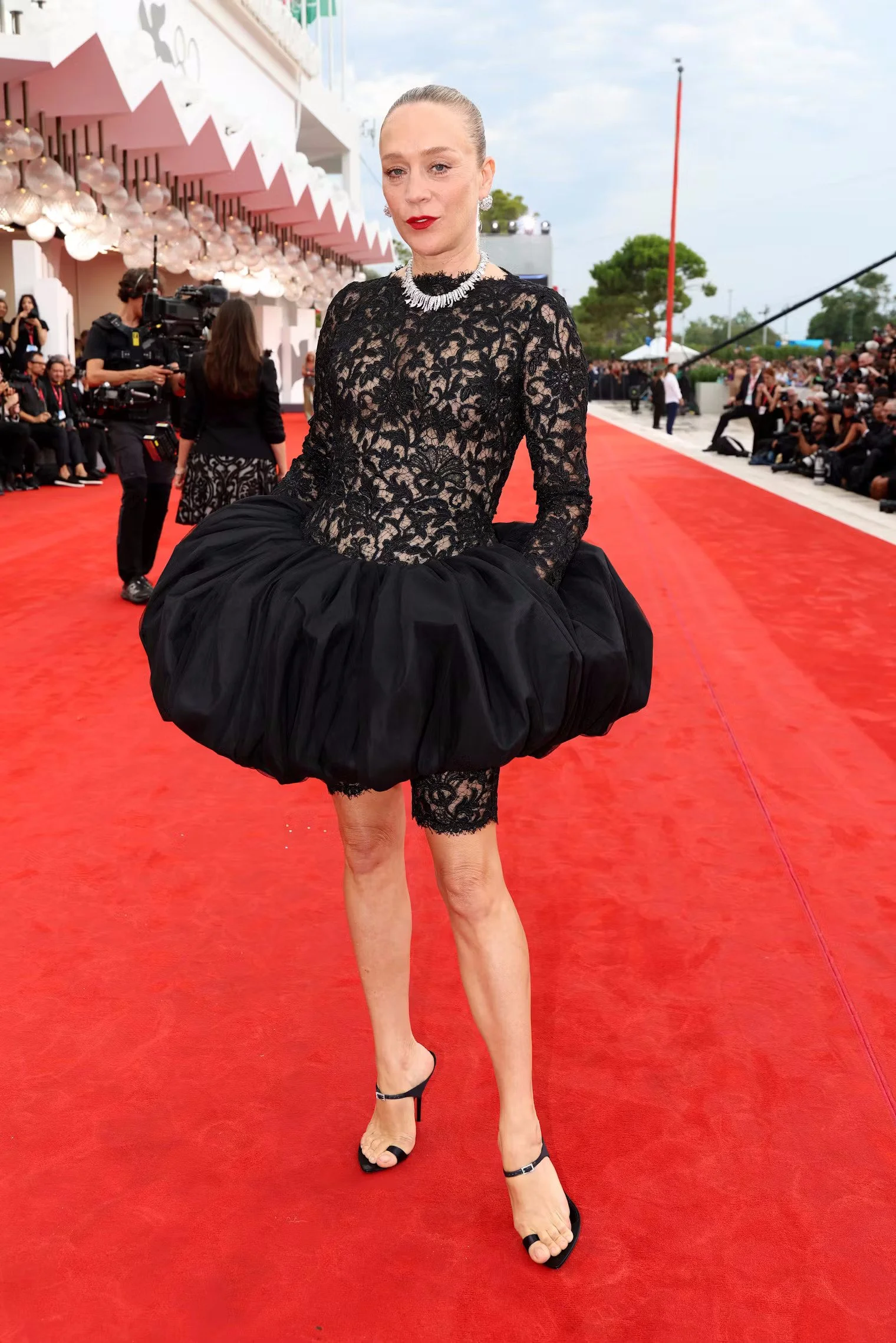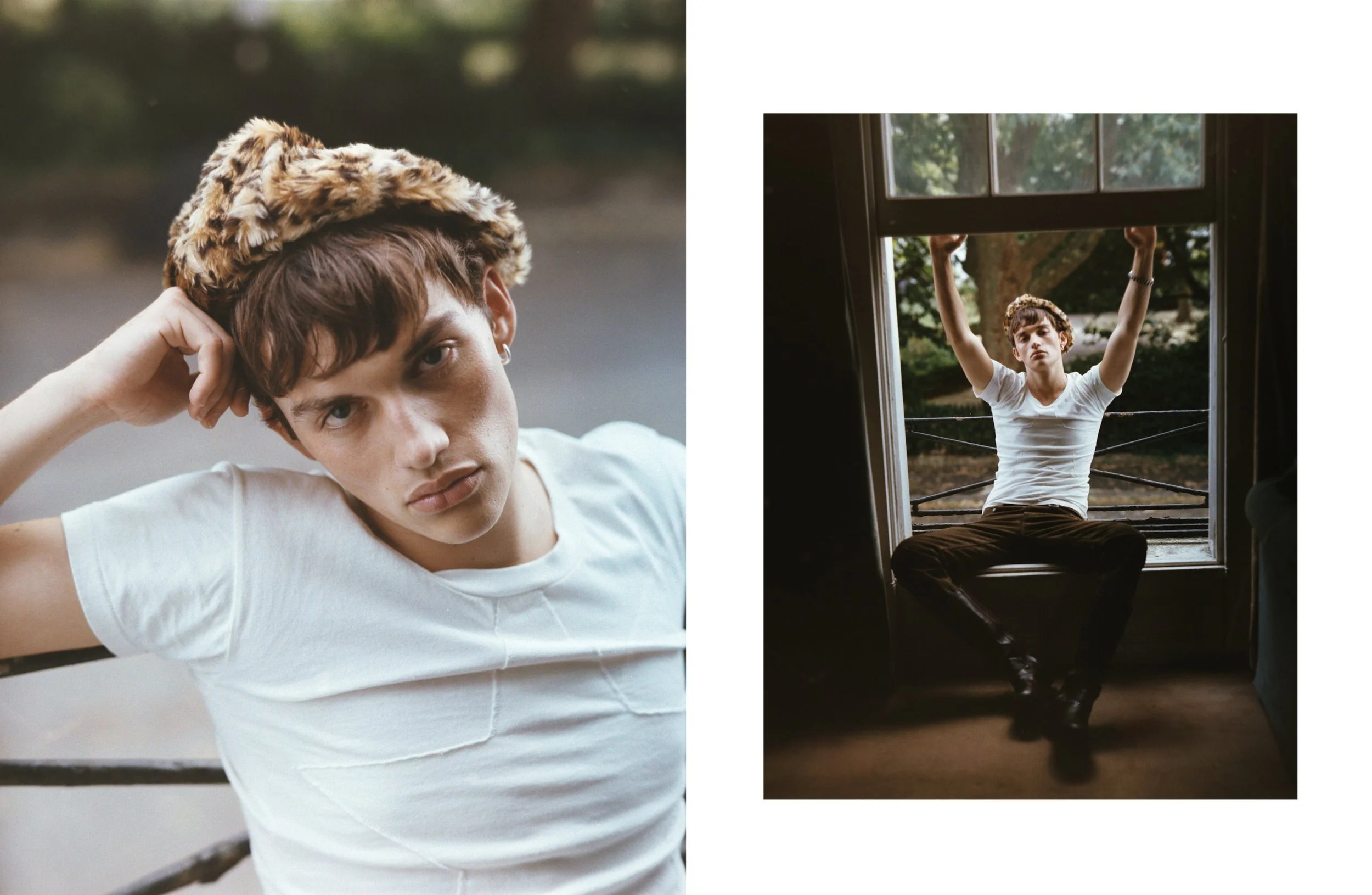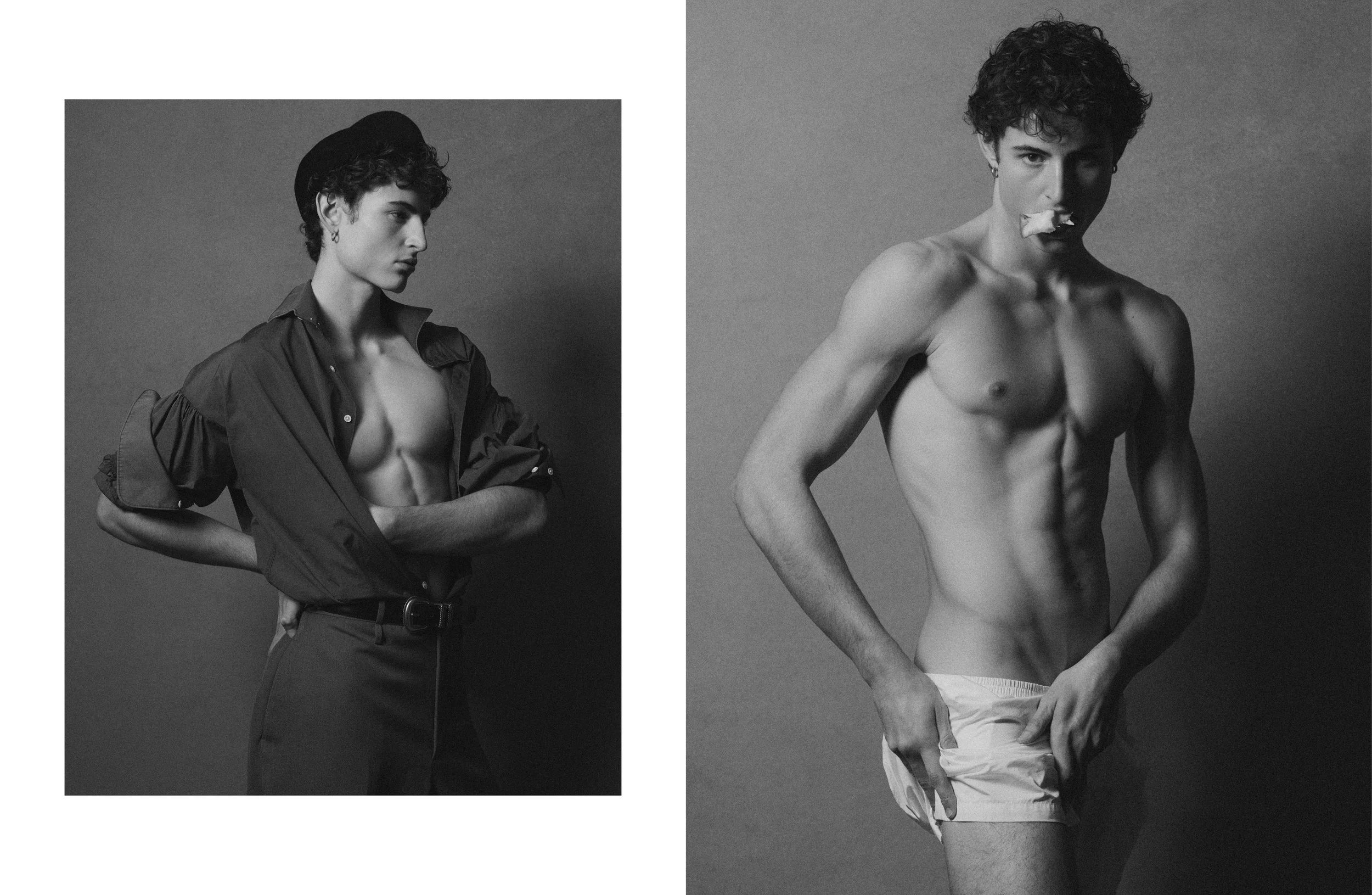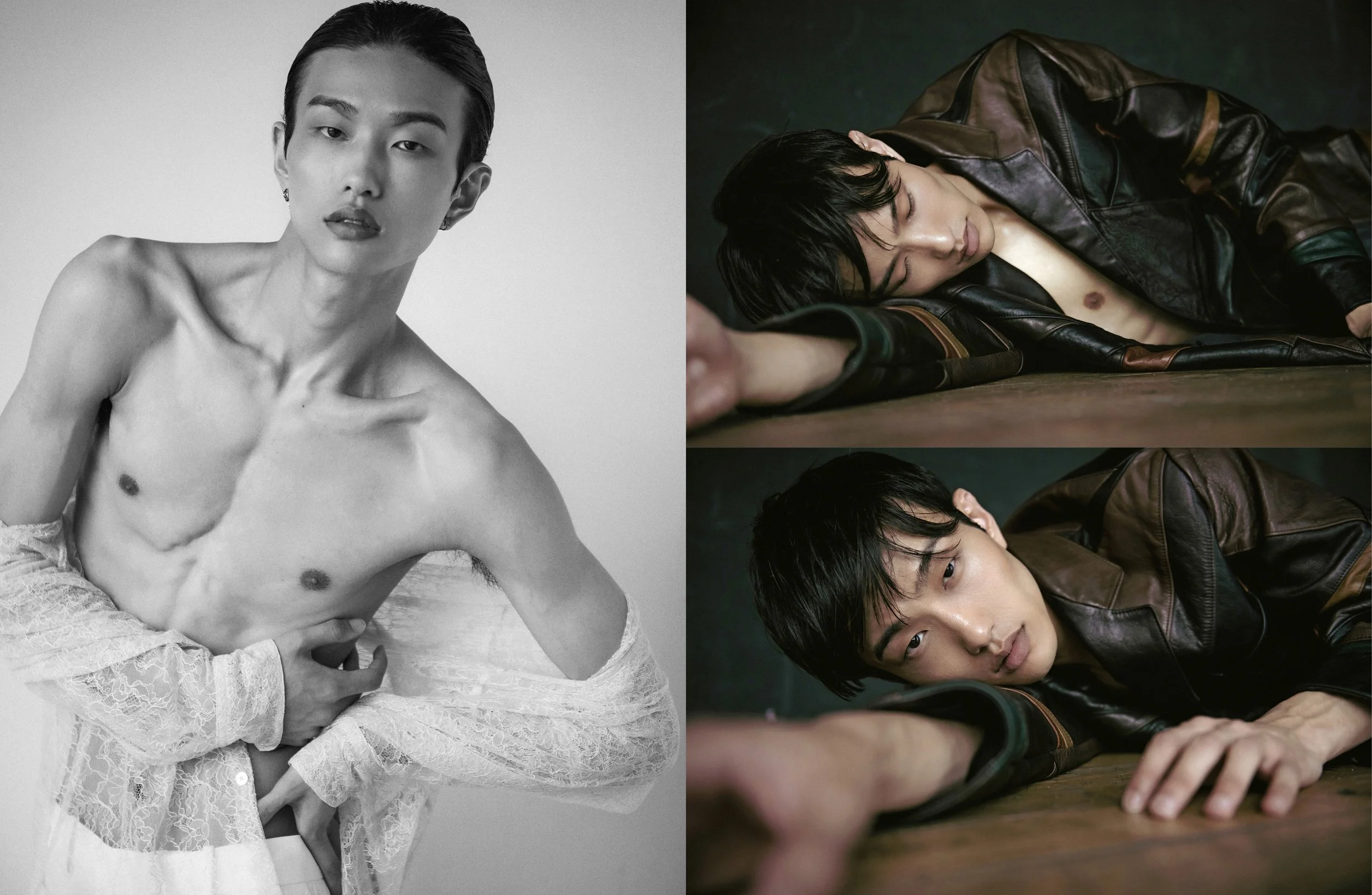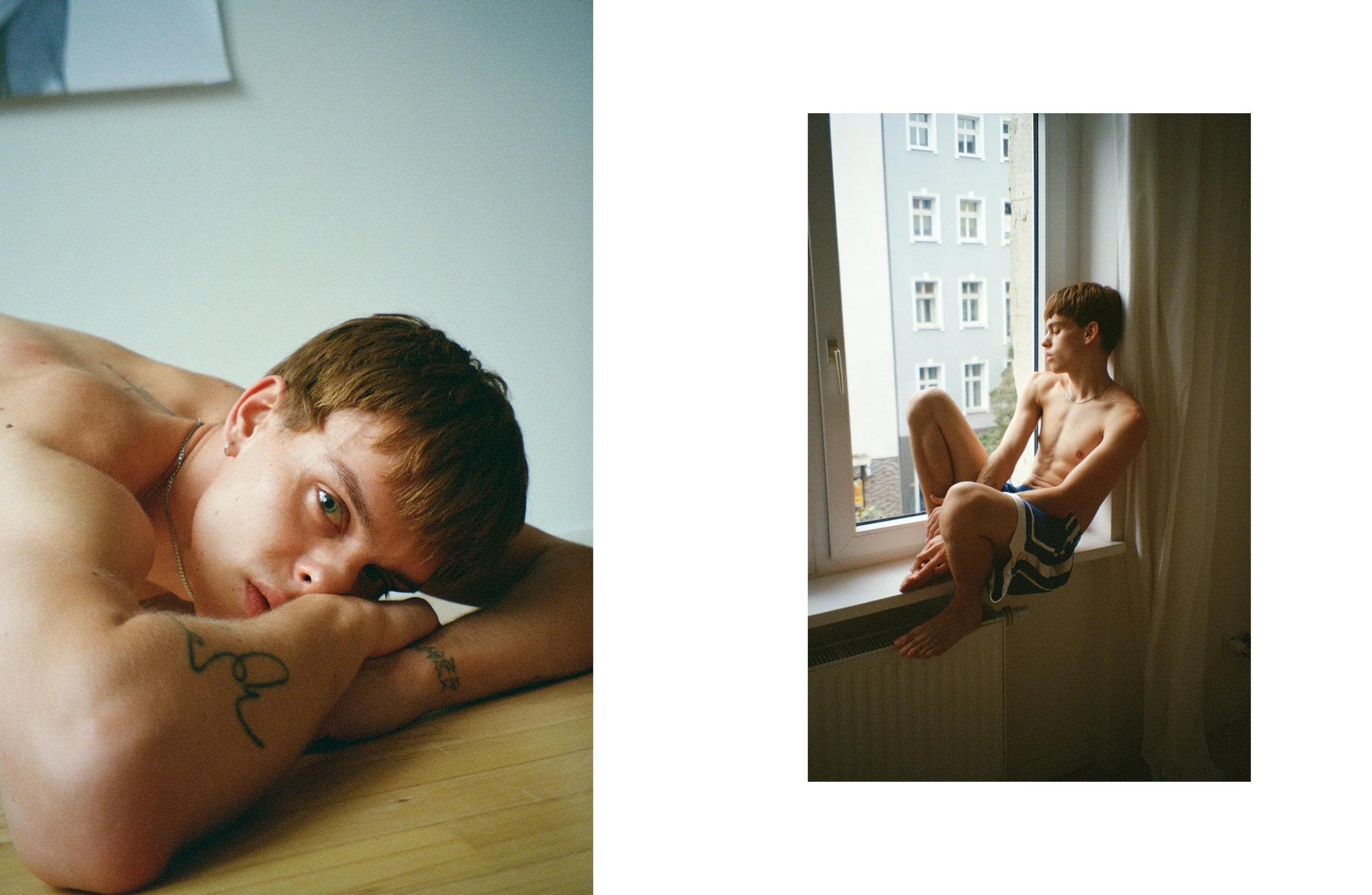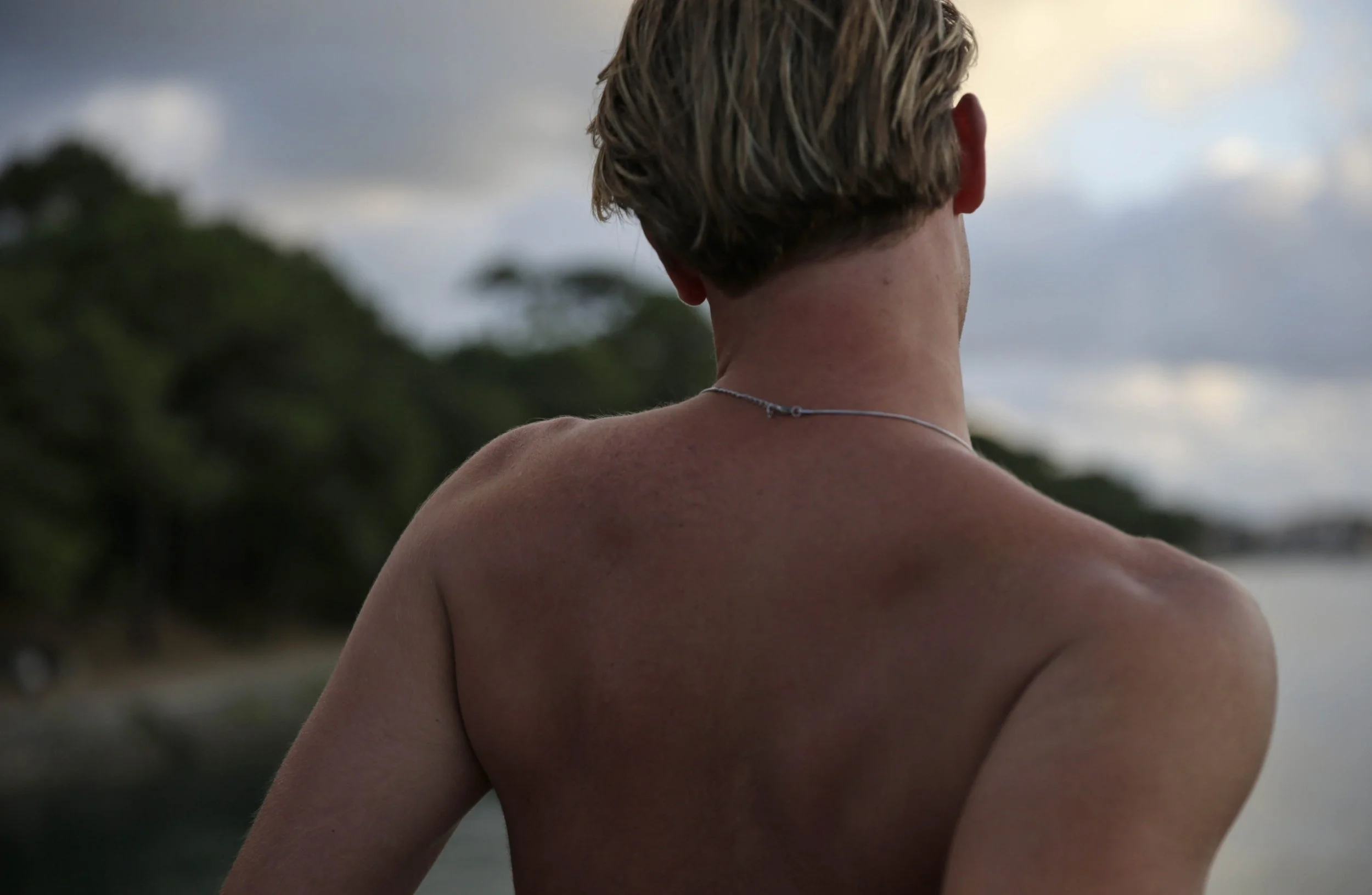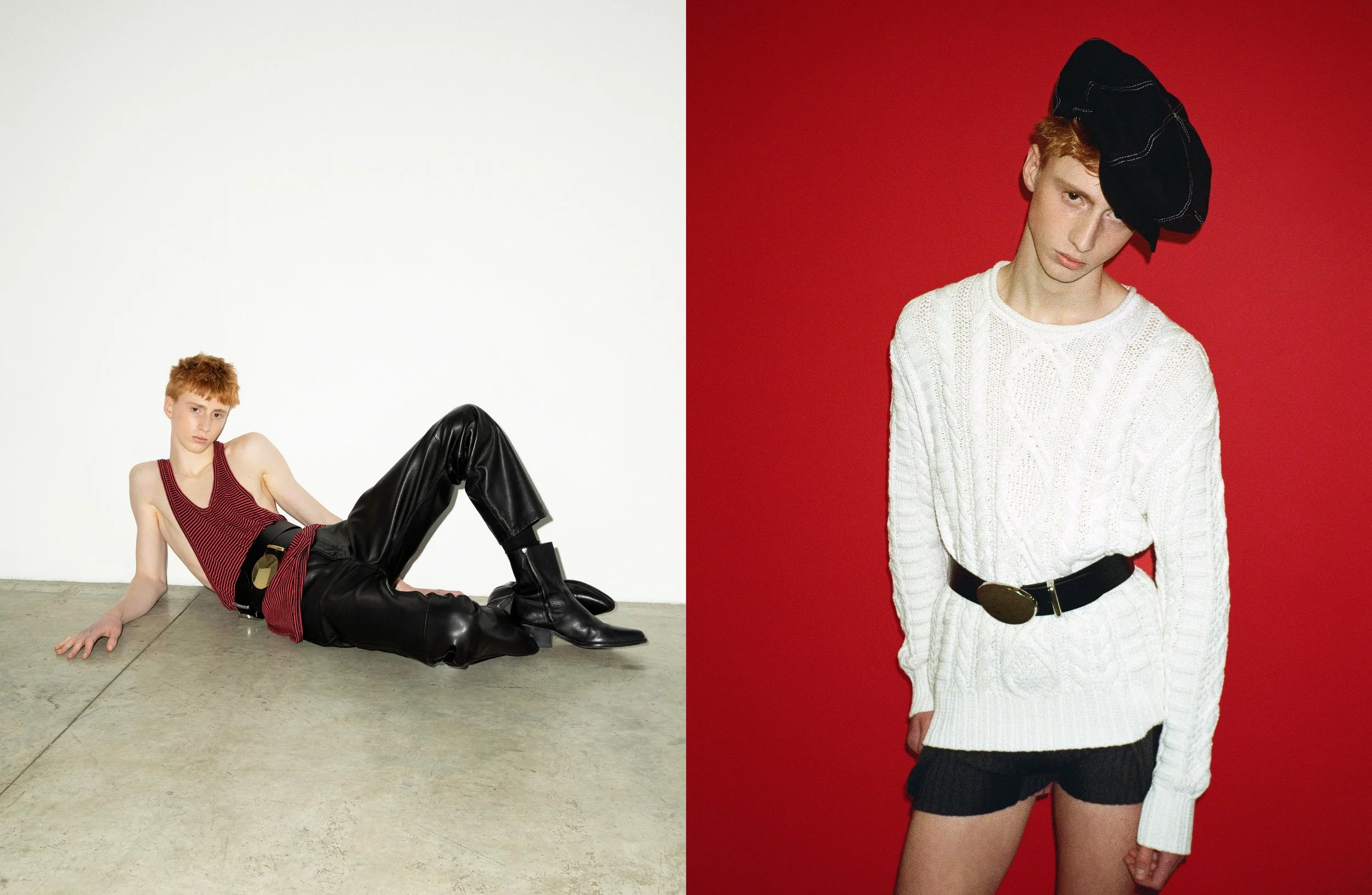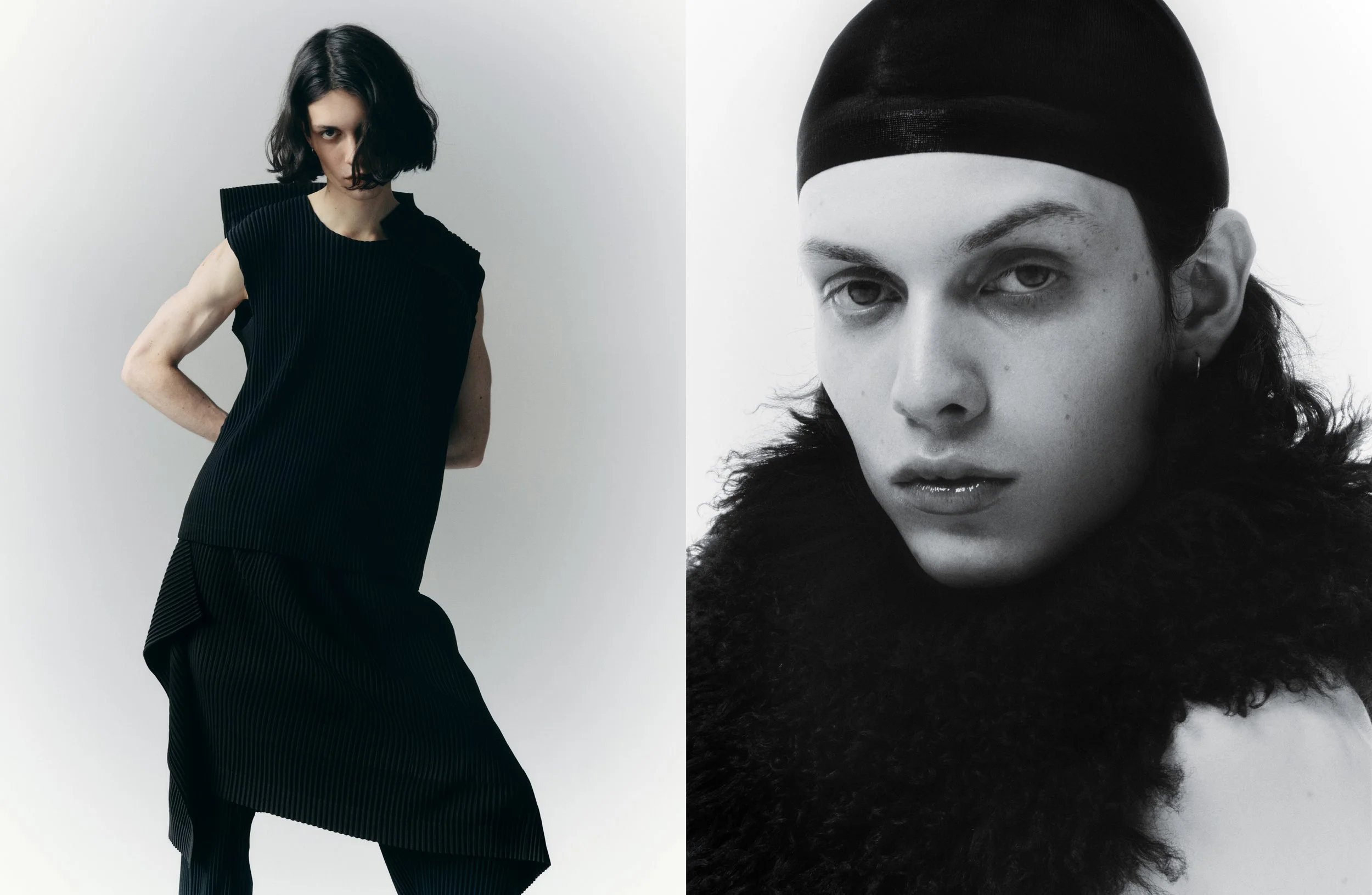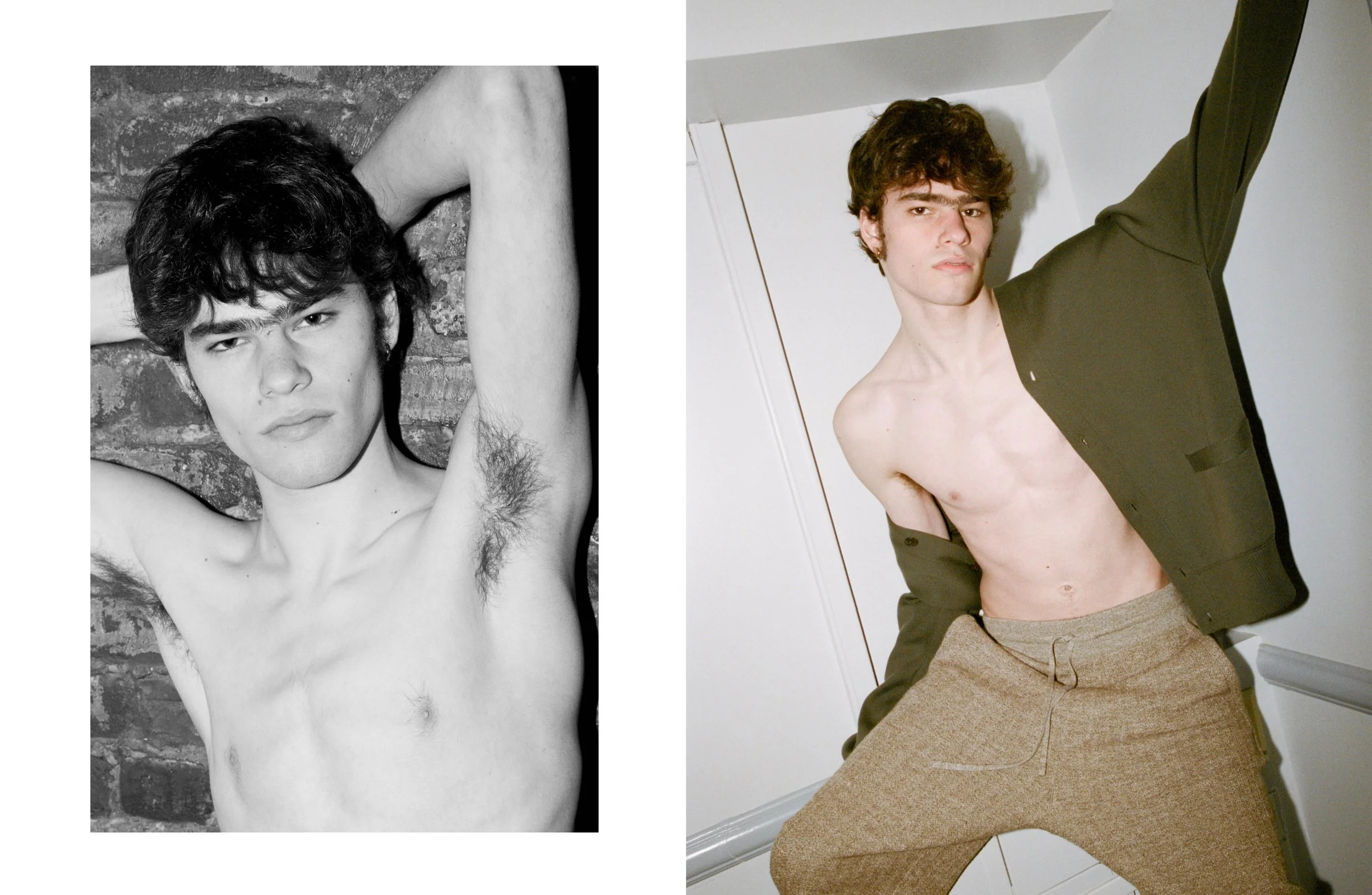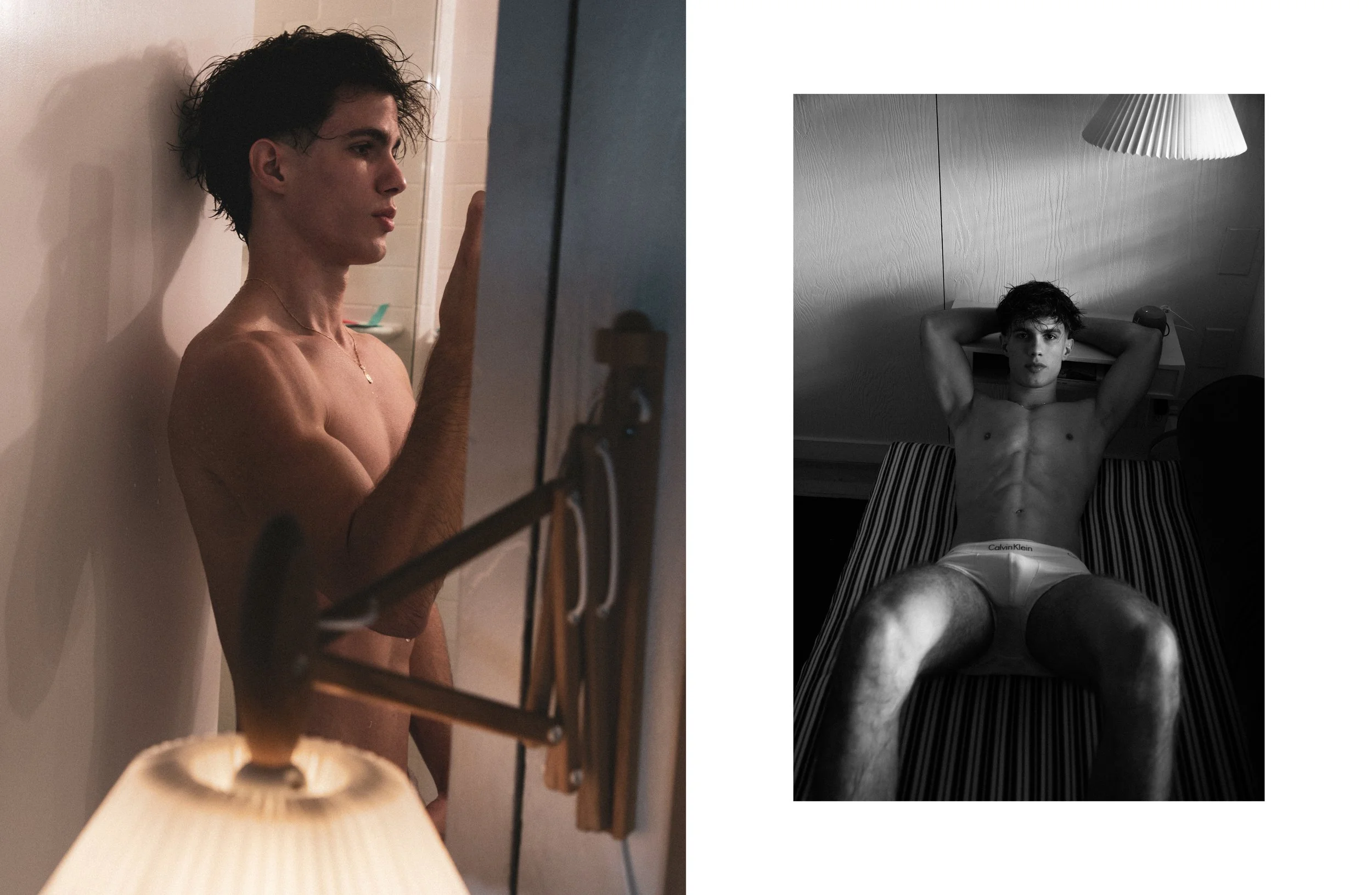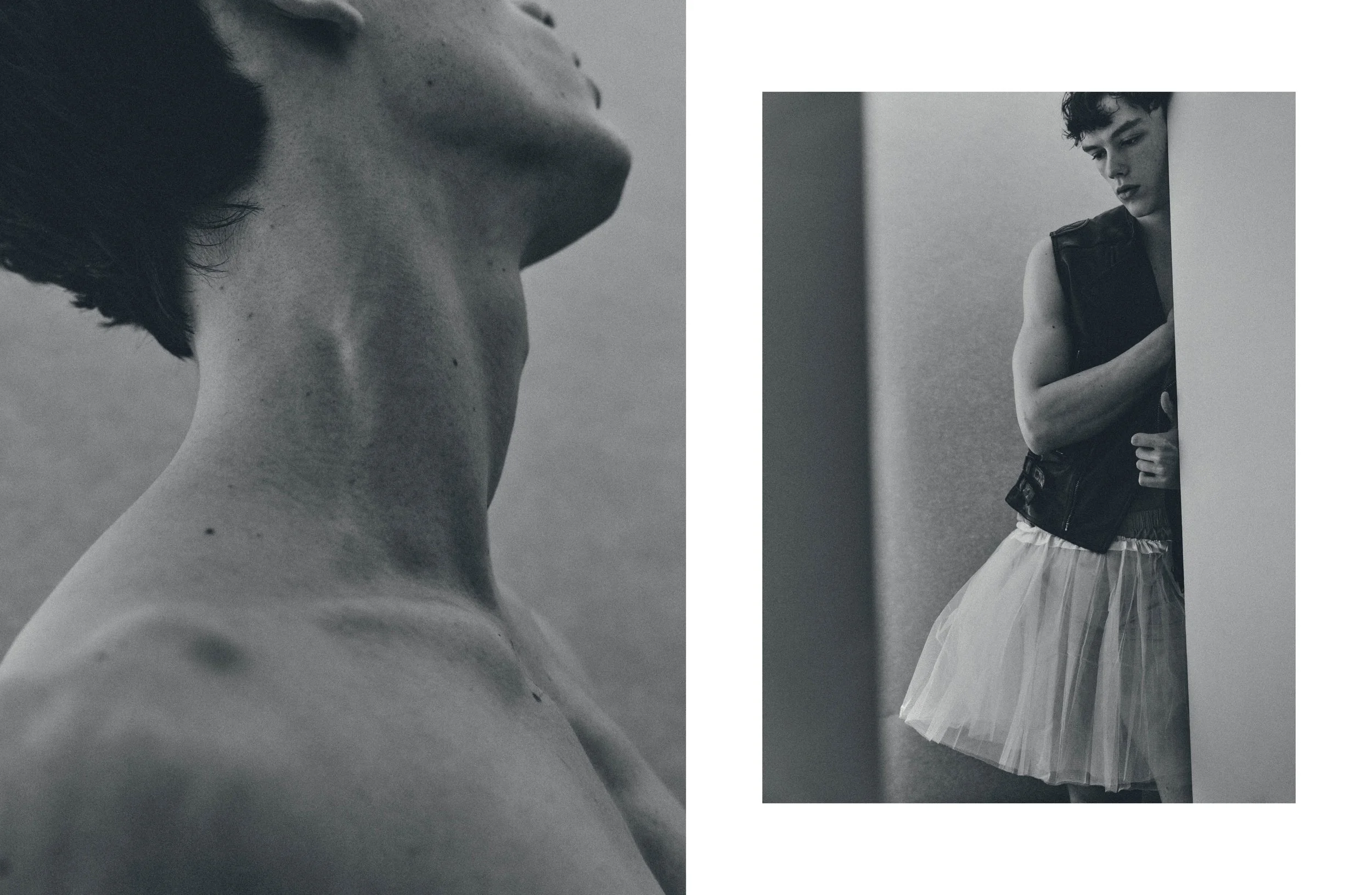ALESSANDRO NIVOLA IS AN ARTIST WHO EXCELS IN CREATIVITY. WITH HIS PERFORMANCES IN GRIPPING DRAMAS LIKE THE MANY SAINTS OF NEWARK, AMERICAN HUSTLE OR DISOBEDIENCE, AS WELL AS HIS UPCOMING TAKE ON A VILLAIN IN THE SUPERHERO MOVIE KRAVEN THE HUNTER, THE AMERICAN ACTOR IS THE MASTER OF BUILDING NUANCED CHARACTERS. THE KEY TO HIS SUCCESS? FIXATING ON REAL-LIFE PEOPLE WHO IN HIS EYES CONNECT TO THE ROLE HE’S PLAYING AND LEARNING TO IMITATE THEM DOWN TO THE SMALLEST DETAIL. FOR US, NIVOLA TALKS ABOUT THE BASIS OF HIS INTRIGUING PROCESS, FEELING FEARLESS WHILE ACTING AND HIS ATTACHMENT TO THE ITALIAN ISLAND OF SARDINIA.
Full look Prada
Over the years, you became known for your superb ability to disappear into your characters - what is the research process that you like to delve into for each of your roles?
I fixate on a real person. Someone I know, someone I’ve met somewhere, or someone I’ve seen on YouTube. And I teach myself to imitate him. It doesn’t matter if the person has anything to do with the world of the film or bears any direct resemblance to the character as described in the script. It may just be that his behaviour, way of talking, facial expressions, rhythms, confidence or low self-esteem, feelings about his life, his relationships, or his worldview, are useful to me to bring something very specific to the character and help tell the story of the film. A couple of examples: to develop a character in an upcoming project, I used a family friend named Philip Nikolayev. He is a Russian poet who teaches at Harvard - a far cry from an oligarch turned crypto-currency villain who transforms into a raging monster as a result of a biochemical treatment gone wrong. For a role in one of David O. Russell’s movies, I went on YouTube and typed in “Angry New Yorker”. I found a video captioned “Small, Angry Man Yells at Trumpet Player in New York City” and he became my model.
Teaching myself to imitate these people is a long and involved process that is different with every role and can include listening to voice recordings all day while I walk around, dialect coaching, recording my own voice a million times and listening to it back, listening to the music the character likes, reading books, watching videos, learning new skills that to him are second nature (I learned to play polo, to play Scott Joplin songs on the piano, and to speak decent French for a movie I made about Coco Chanel and her lover Boy Capel), historical research, physical work to change my body, experiments with hairstyles and becoming familiar with objects that he might use habitually – a knife, a pen, a hat, Orthodox tefillin, a Bible – anything. That’s just a few. There’s no methodical way to do this. But the goal is to find what is specific to this one person in the minutest detail. And these things then start to change the way I think and feel. By the time we are shooting, I don’t have to think at all. What happens then I can’t explain.
I read that you have a principle of choosing films based on the directors that you want to work with - who are some that are on your list right now?
Jonathan Glazer, Sofia Coppola, Brady Corbet, Ruben Östlund, Joachim Trier, Edward Berger, Bennett Miller, Steve McQueen, Shannon Murphy, Martin Scorsese, Emily Mortimer, Bong Joon-ho and Ben Stiller. But I wish Miloš Forman was still alive.
Left Full look Miu Miu
Right Suit Zegna, shirt Nanushka, shoes Louis Vuitton
You’ve played a couple of villains throughout your career - what are the biggest joys of playing a bad guy?
Most well-written villains don’t fit comfortably into society, so they usually have something surprising and unusual about their psychology or behaviour and that fires my imagination with all kinds of possibilities. It’s also liberating not having to be attractive. They should usually be at least a little funny. People who struggle to fit in are often funny, even when there is a growing awareness of their frustration having potential danger. The best is when they’re funny and then scary with no transition in between. With bad guys, there are lots of opportunities to entertain in a flashy way, but it’s also important not to succumb to the temptation to be outsized just to call attention to yourself. Reality is always more interesting and, in the end, more compelling. So, I always try and understand why they are feeling so angry or vengeful or full of self-loathing and see the world through their eyes and feel their pain. I don’t judge them or comment on them as the actor. They are the heroes of their own stories.
Aside from your screen career, you have an extensive experience as a stage actor. Which of your theatre roles has been the biggest challenge and why?
The Elephant Man was the hardest because I had to have a dumb-looking moustache for a year. I got a Tony nomination for it, so I guess it was worth it.
You grew up in between two cultures - what’s your most Italian and most American quality?
Growing up between two cultures has left me with no clear identity at all. In Italy, I’m foreign, and in America, I’m kind of foreign too. But... I would say my most Italian quality would be wearing a heavy gold Saint Christopher medallion that was forged by the Vatican goldsmiths with the words “San Cristoforo Prega Per Noi” inscribed on the back, even though I’m not religious. Most American quality - good personal hygiene.
Sweater Ferragamo
Your family has roots in Sardinia - what does that place mean to you and what are some of your most important spots on the island?
I love my grandfather’s museum in the village of Orani, the Museo Nivola. It’s one of the most beautiful small museums in the world. Although I visited Italy with my family many times when I was young, the first time I was allowed to go to Sardinia was for the opening of the museum when I was about 14 because before then, there was a real threat of “banditi” kidnappings - local bands of small-time criminals who would hide people in mile-deep mountain caves for ransom. They assumed my grandfather was a rich American now that he lived in New York, and word spread fast whenever he would return to the island. The problem had died down by my mid-teens and so I started visiting my extended family there every summer. Everyone in the town is related to me. When I would see a beautiful girl in the street and point her out to a cousin, they’d say, “No, no, no - she’s your cousin too!”
There is also Cala Gonone, a small town on the east coast where you can rent little boats that take you down the undeveloped coast (it’s a protected national park) and drop you alone in little beach coves. Meanwhile, all over the island, there are Iron Age monuments and ruins called “Nuraghe” which are some of the oldest structures and remnants of civilisation anywhere in the world. Over the years, I’ve become more and more determined to force the Sardinians to embrace me as one of their own. This year, I was given an award at the Filming Italy Sardegna Festival so maybe I’m slowly breaking them down.
You are part of a family of actors - what’s a film that you watched recently with your wife and kids that blew you all away?
We watched Tropic Thunder again and it holds up. It’s Robert Downey Jr.’s best performance. Also, Orion: The Man Who Would Be King. It’s a documentary we stumbled across about a man named Jimmy Ellis - an orphaned child who was adopted at five years old and grew up on a horse farm in rural Alabama. He was both blessed and cursed with a killer singing voice that sounded indistinguishable from Elvis Presley. People went weak in the knees when he sang but he couldn’t find success because there was no room for more than one “King”. But in 1977 when Elvis died, a pulp fiction novelist wrote a book called “Orion” about a fictional character, loosely based on Elvis, who had faked his own death to escape the prison of his own fame. He had reconstructed his face and re-emerged with a new identity. Jimmy made a Faustian pact with the head of Sun Records, Shelby Singleton, who proposed to record an album and send him out on tour if he agreed to become Orion and wear a bejewelled Zoro-like mask at all times – in the supermarket, at restaurants, walking his dog – anywhere outside the confines of his own home. Orion became a sensation and he seemingly had achieved the rock star life he’d dreamed of, but the manipulation at the hands of Singleton and his complete loss of identity soon began to drive him insane with tragic consequences. It’s hilarious and devastating and we optioned the doc and are now adapting it into a narrative feature film.
Left Top Miu Miu, coat Kenzo
Right Full look Louis Vuitton
Your kids recently starred together in a movie - what advice did you give them prior to the experience?
None. They weren’t interested in what I had to say.
Greil Marcus said once about you, “Alessandro Nivola is magnetic. You want to know what he’s going to do next. You don’t ever know what he’s really thinking, and you’re not even sure he knows. Maybe he’s running on instinct, but he’s got great instincts. He’s afraid of absolutely nothing.” Is there anything that you’re afraid of?
Greil Marcus is the best journalist ever to write about music and the people who make music. He’s not a film insider but he knows about performance of all kinds, and I think that review is the only one that I’ve never forgotten. But as for being afraid? I’m afraid of everything. Both external and internal. I have terrible dreams about the end of the world. I’m afraid of the future, of failure, of what people think of me, of not being able to do creative work anymore, of having no purpose, of life having no meaning, of nothing feeling new, of disappointing my children, of my children being unhappy, of the dog being unhappy...should I go on? When I’m performing, I don’t think about these things. I don’t think about anything. It’s heaven.
…
Discover the full story in our FW23 FANTASY Issue.
The interview & fashion story were conducted before the SAG-AFTRA strike.
Interview by Martin Onufrowicz
Photography by Pierre Crosby
Fashion by Shan Temuri
Casting by Imagemachine Cs
Grooming by Jessi Butterfield
Stylist’s assistant Angelina Ding
